It was suggested to me that I should visit the Philadelphia Masonic Temple when I was in town. The temple is right downtown, across the street from centrally-located City Hall and not too far from the Reading Terminal Market. I don’t think I would have realized I even could visit without the suggestion, but I’m glad I did! This building looks like a cross between a cathedral and a palace. It is ORNATE.
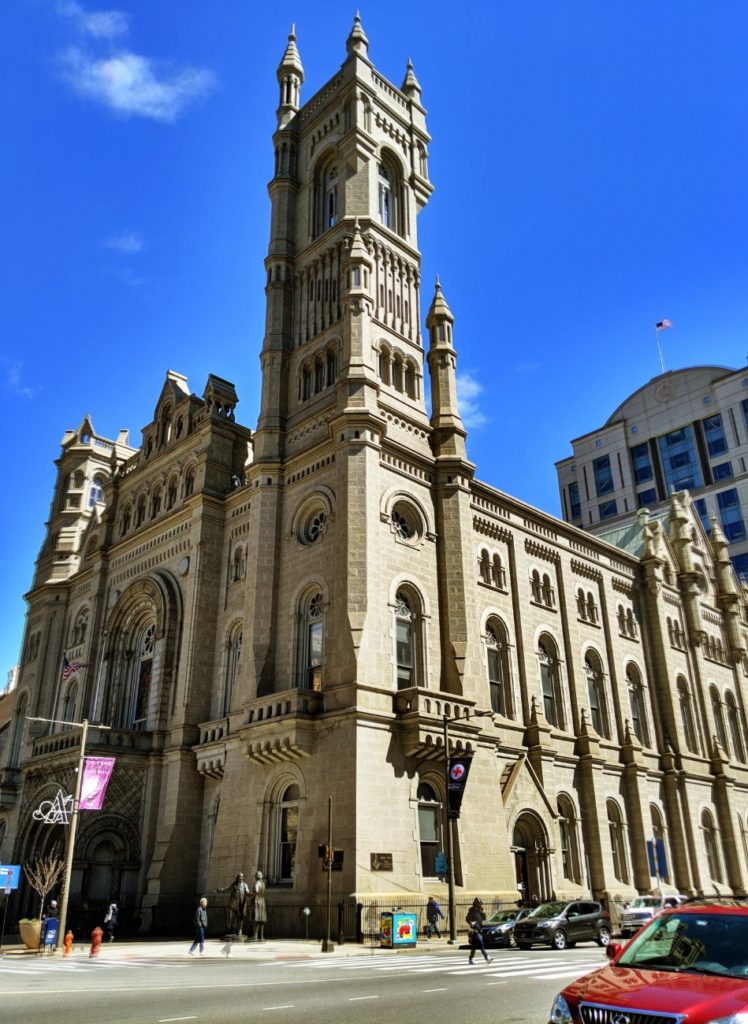
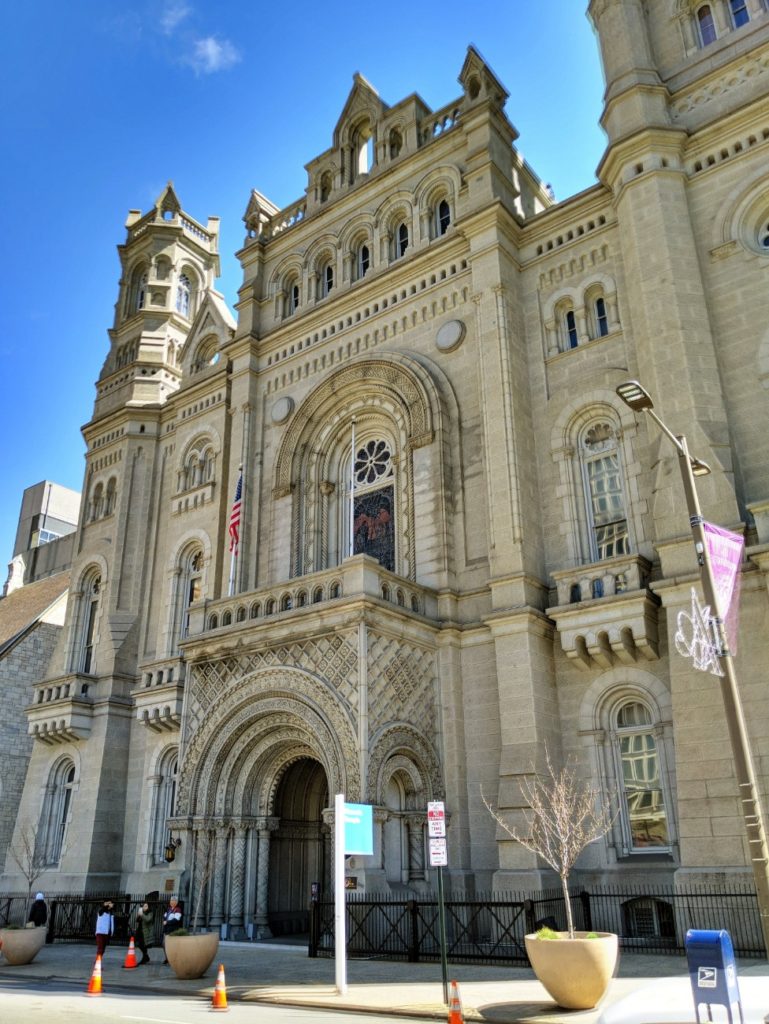
Philadelphia Masonic Temple
Which shouldn’t surprise, really, from a society that “evolved from the guilds of stonemasons and cathedral builders of the Middle Ages.” And they really put all their tricks into this temple. The outside is Norman in style and was completed in 1873, The interiors took another 15 years. And there are a lot of “tricks” inside, architecturally speaking – using one medium to look like another, placing false windows, etc.
And ultimately, the majority of the building is event space. There are seven Masonic halls, each with its own lavish theme, which can be rented by any Masonic chapter. All of the halls are set up for (what I assume is) your typical Masonic Lodge meeting, with the appropriate chairs and torches and whatnot. You can also rent any of the halls for your wedding or corporate event. There’s also a grand white dining hall presided over by an oversized (I want to say 18 feet tall) statue of Ben Franklin.
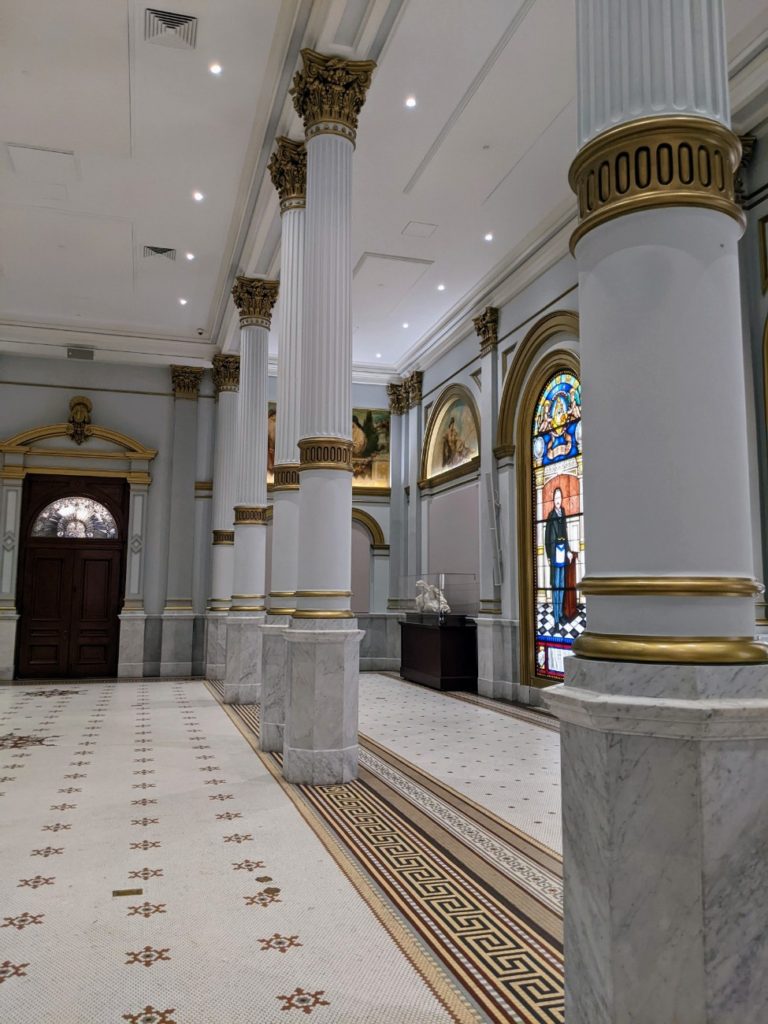
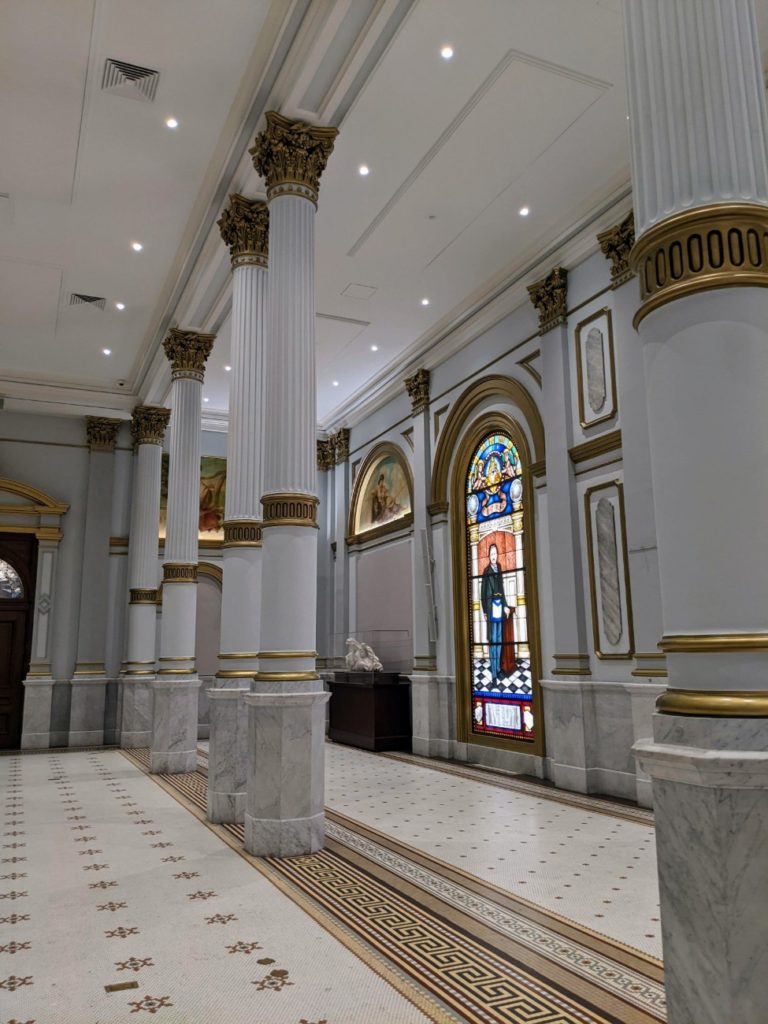
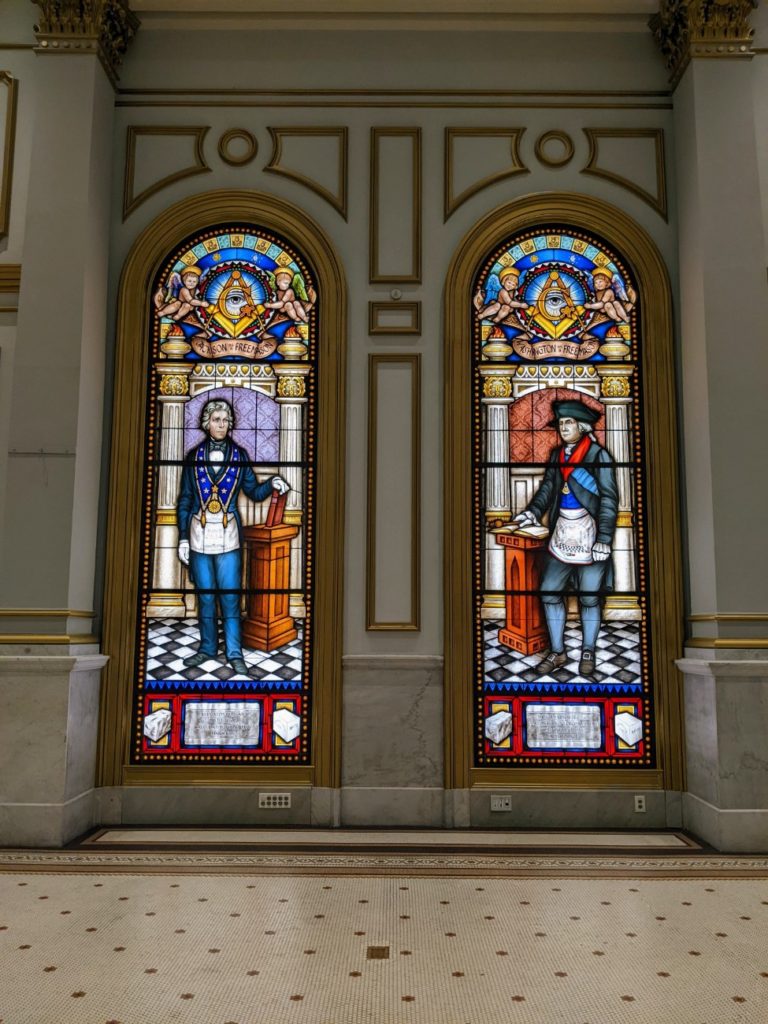
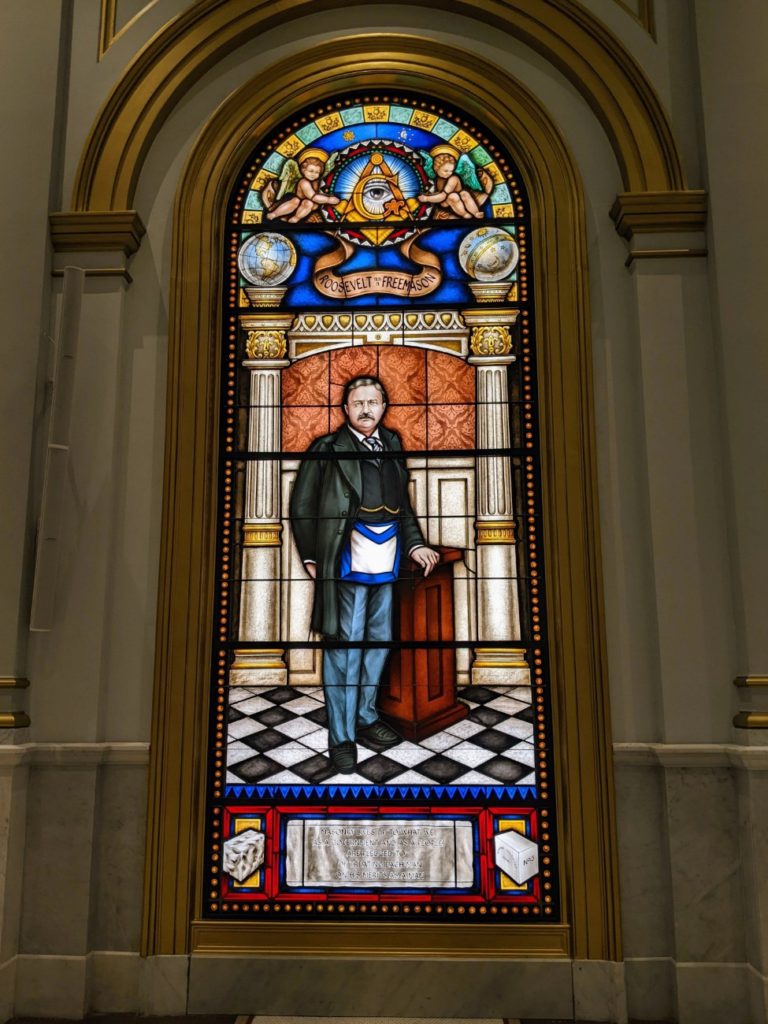
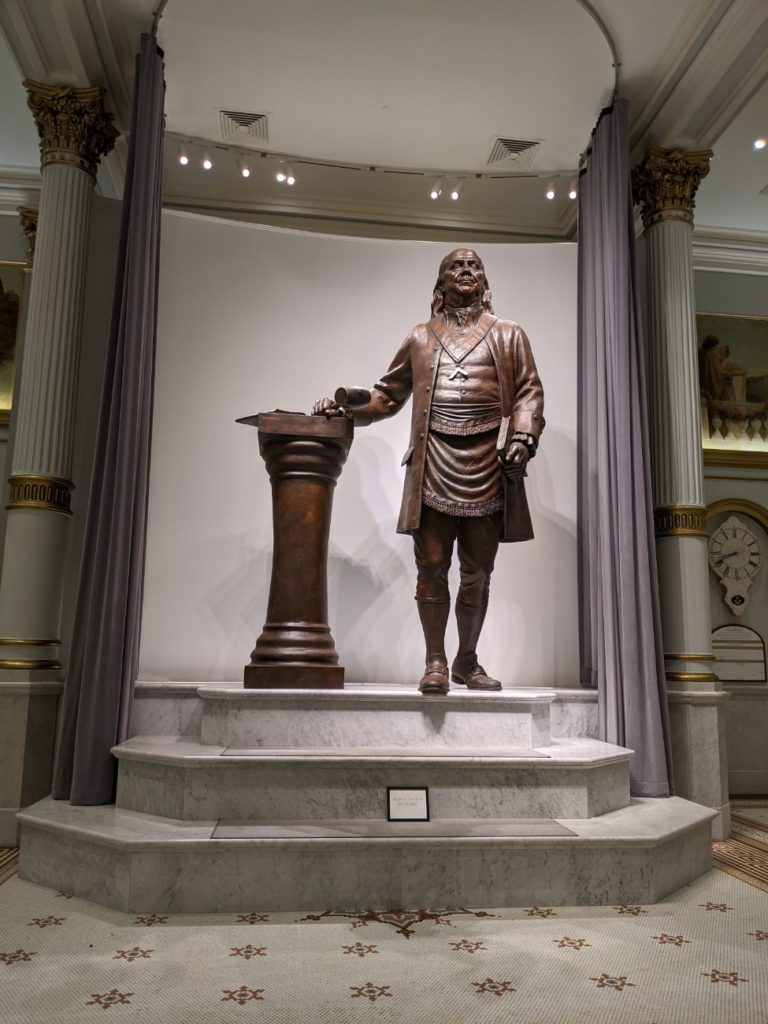
The Tour
Visitors start their tour in the ornate library and museum where you can find all sorts of Masonic gear – gavels, aprons, and punch bowls, for instance. Including George Washington’s own Masonic apron at the end under a stained glass window. There are pictures and mementos from other famous Philadelphian Masons, like John Wanamaker, who built the first department store around the corner.
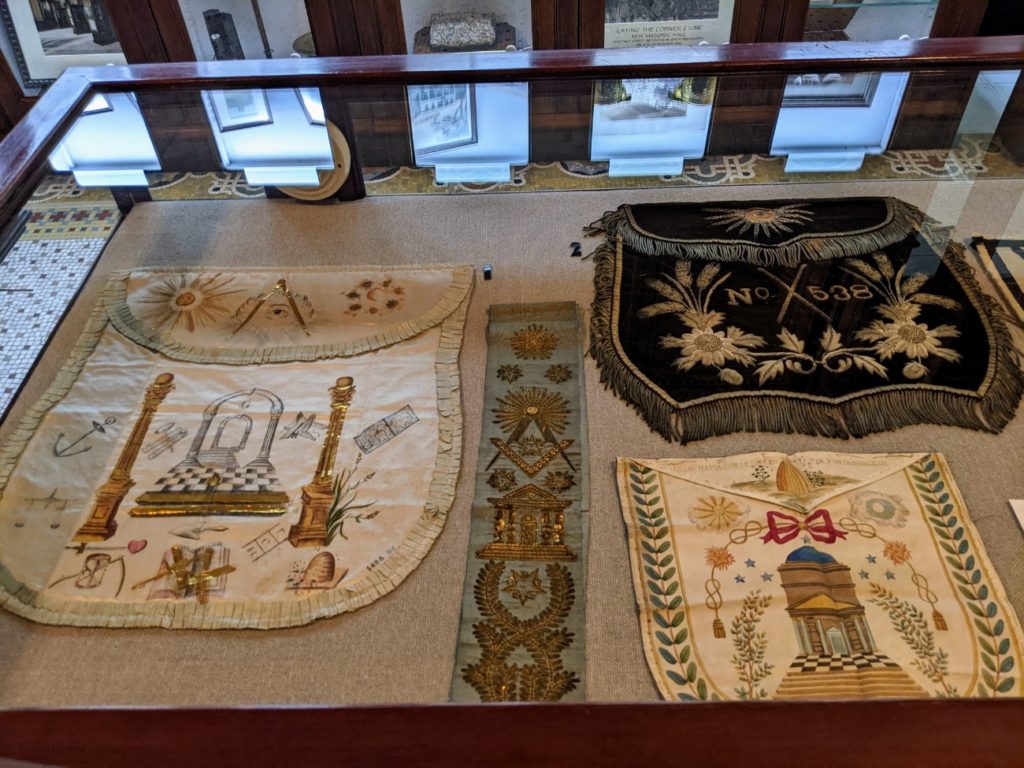
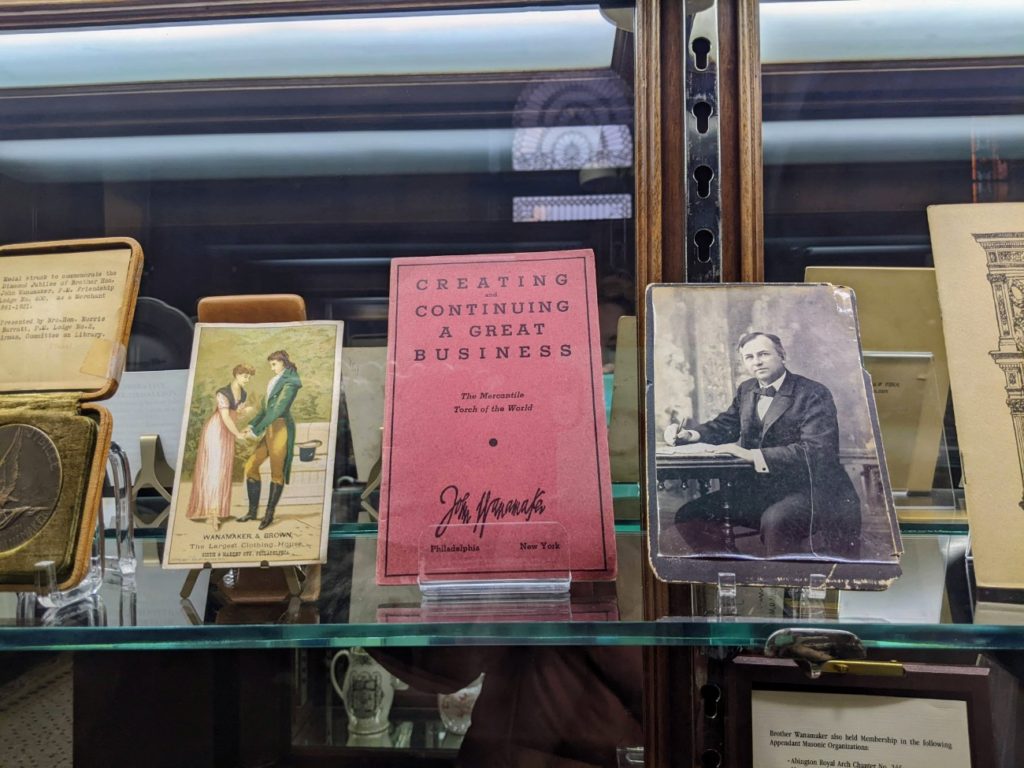
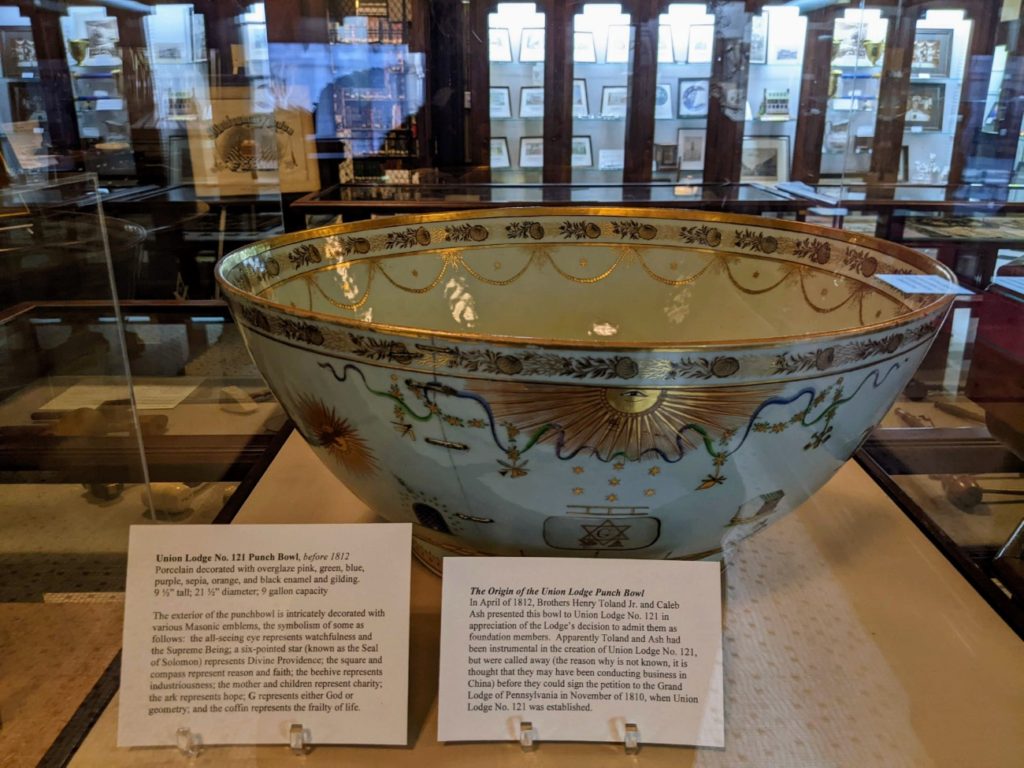
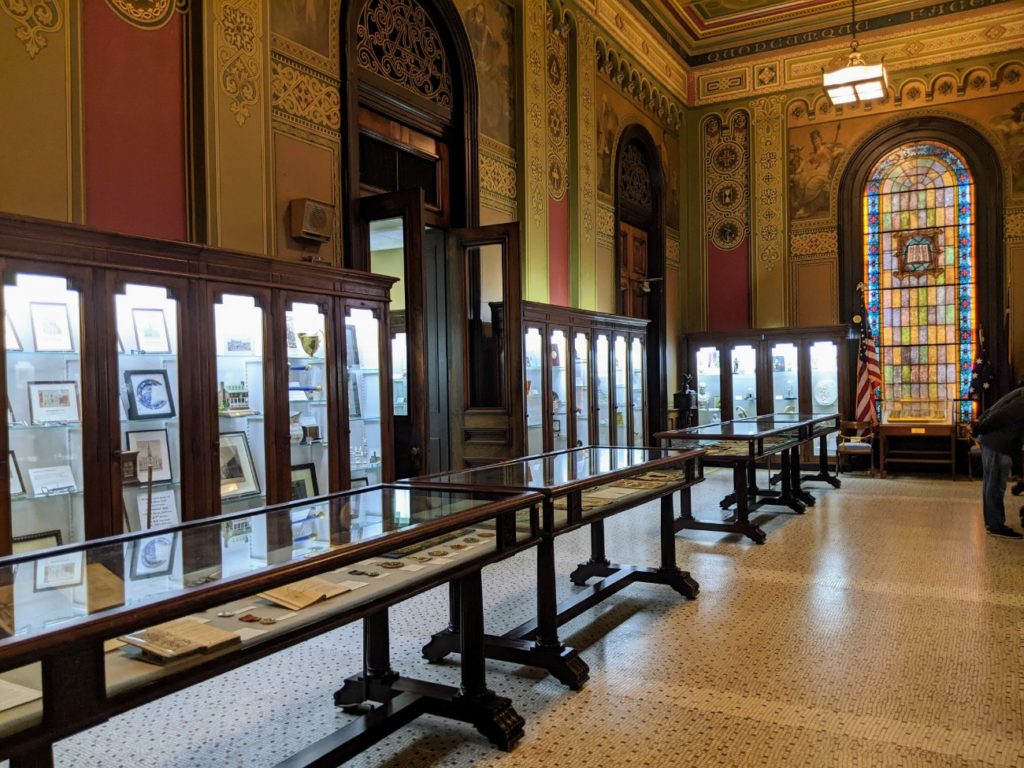
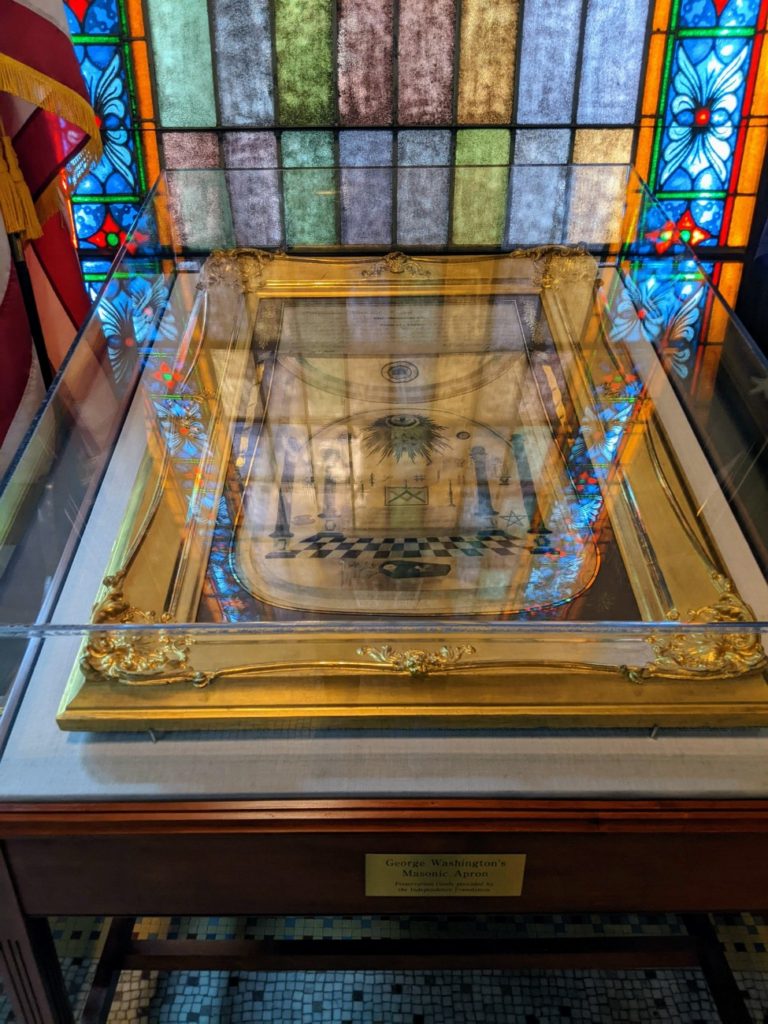
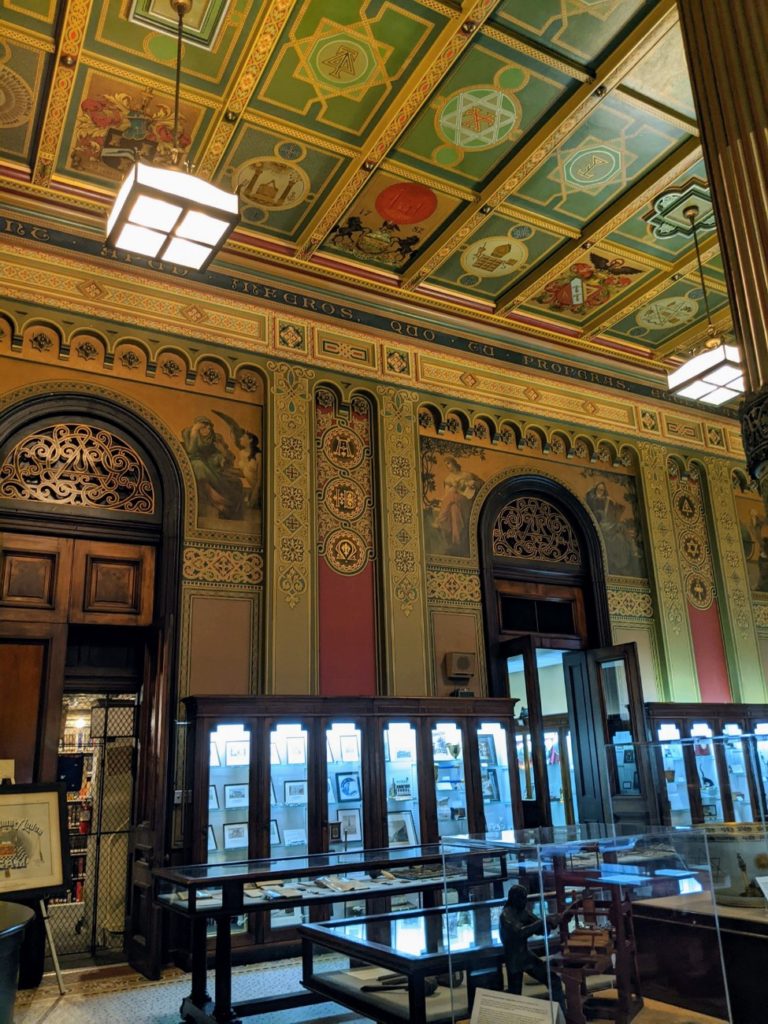
When you start your tour, the group moves into the Franklin Room – a comfortable oversized parlor with portraits of past Grand Master Masons on the walls. The Freemasons are a men-only crowd, and this room was provided for the ladies to hang around in. As such, there are murals of typical (and outdated) roles for women displayed around the upper part of the walls. To inspire, one must assume.
The rest of the hour-long tour takes you through all the meeting halls. Note that on the doors of each hall is a special door-knocker. If anyone comes late to a meeting, there’s a whole procedure they follow to let them inside.
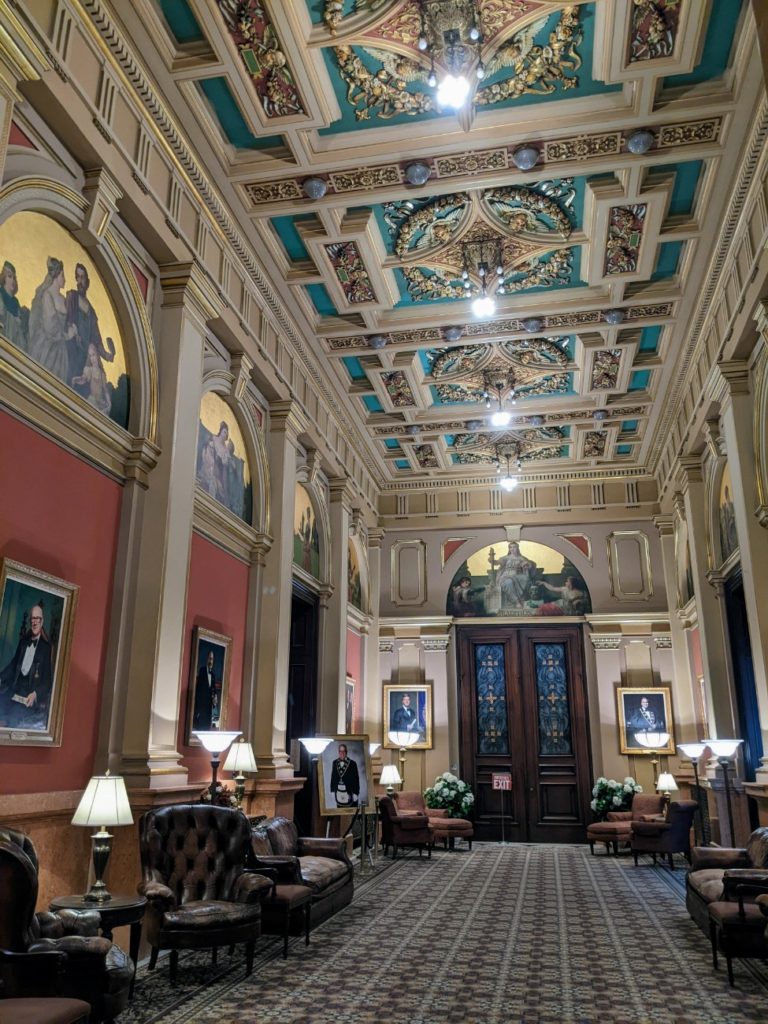
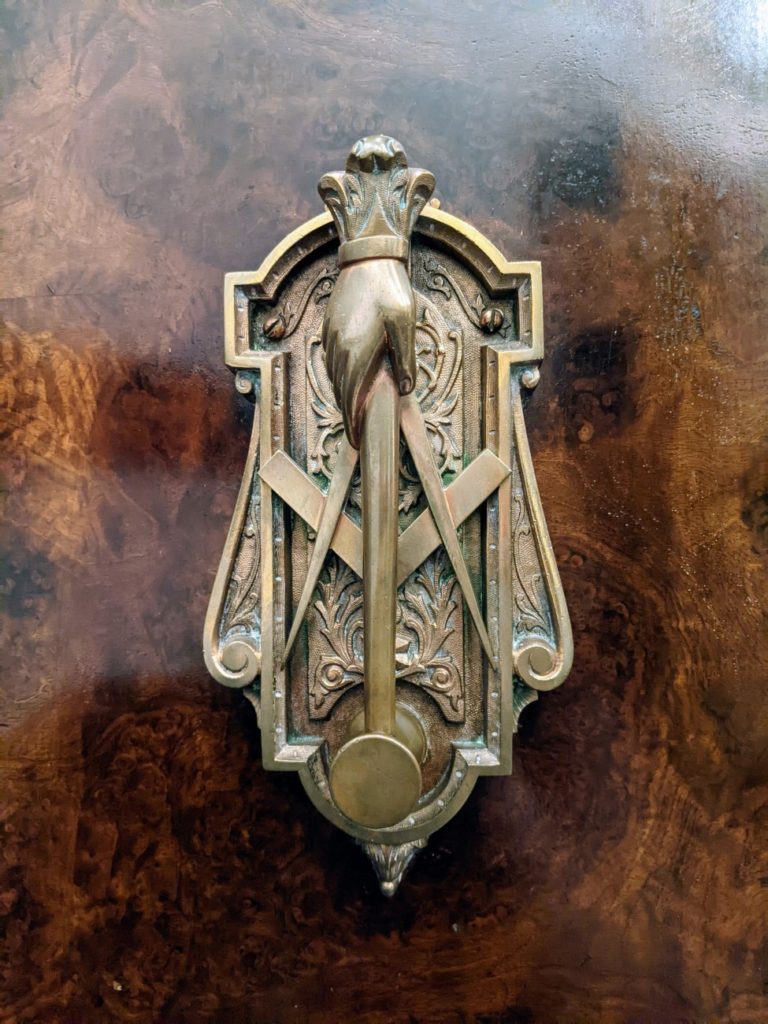
And it’s not only the meeting halls that are so finely decorated. The opulence starts at the front door and flows right into the halls and magnificent staircases, going up three floors. (They eventually put in an elevator sometime later.)
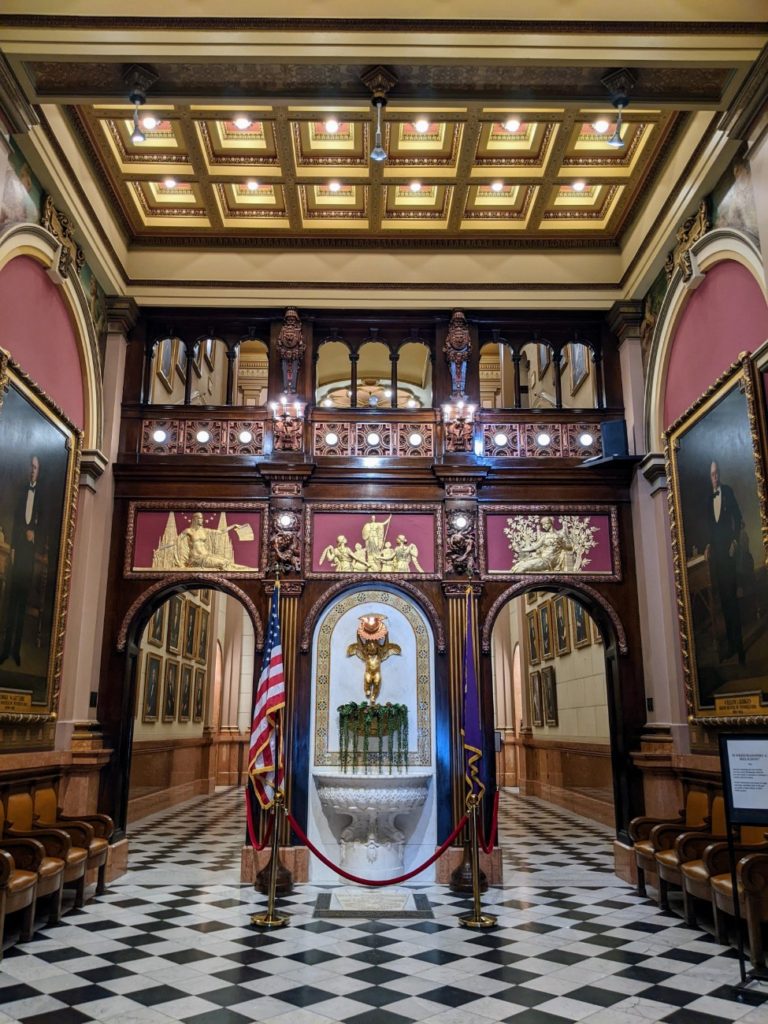
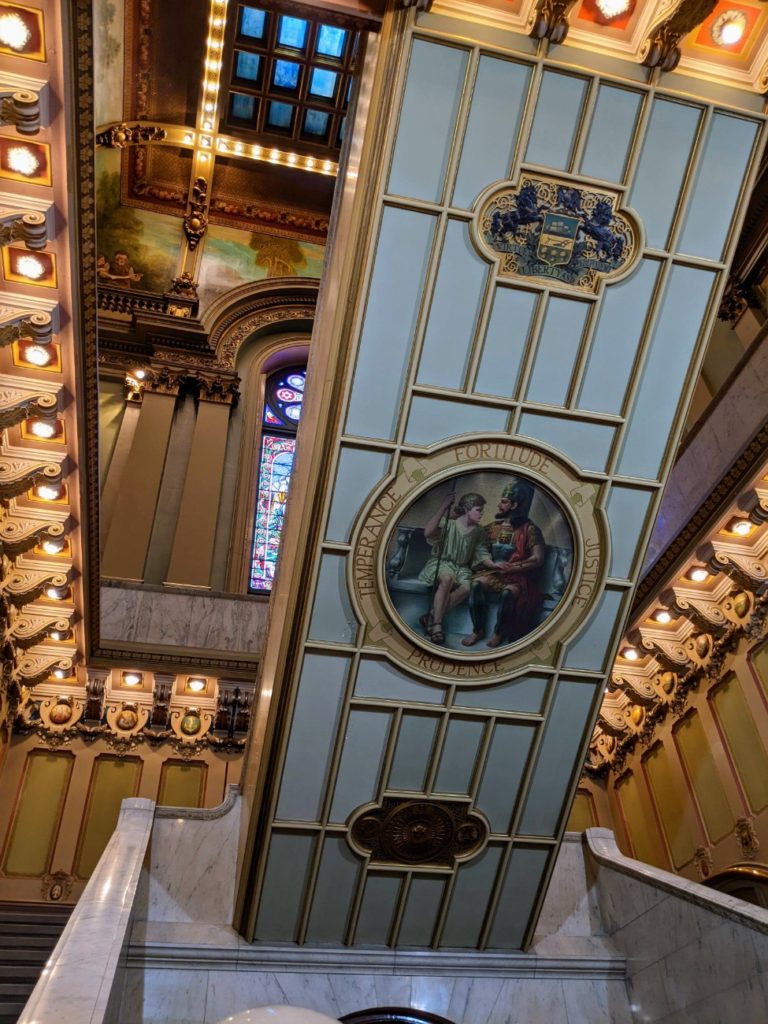
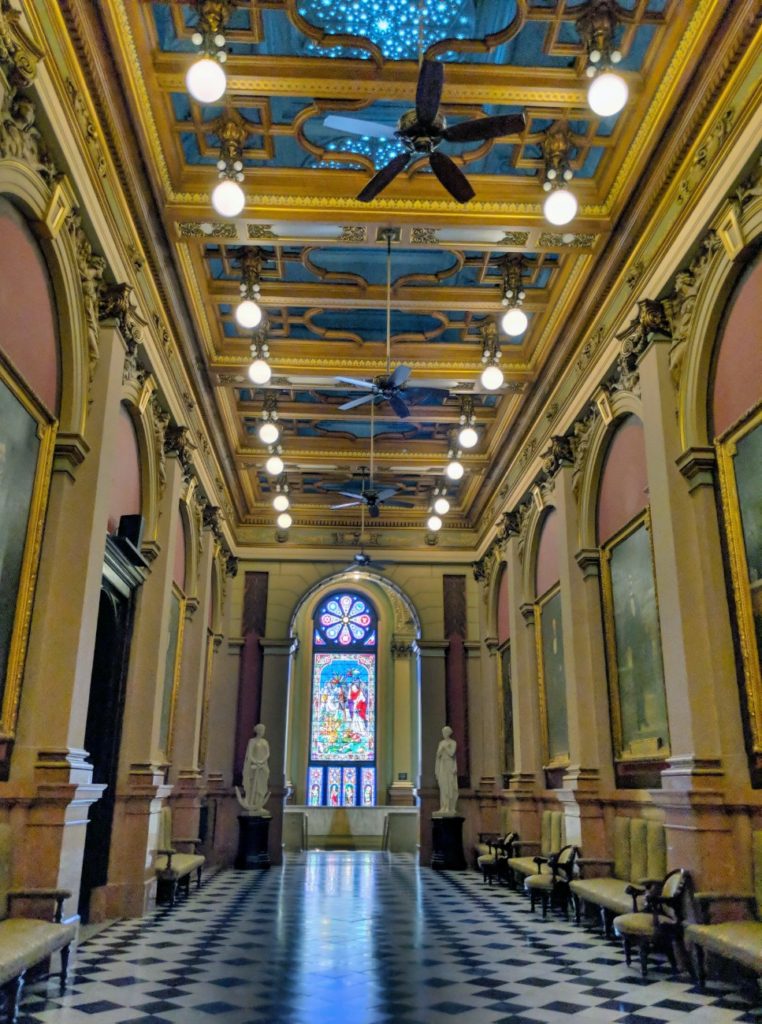

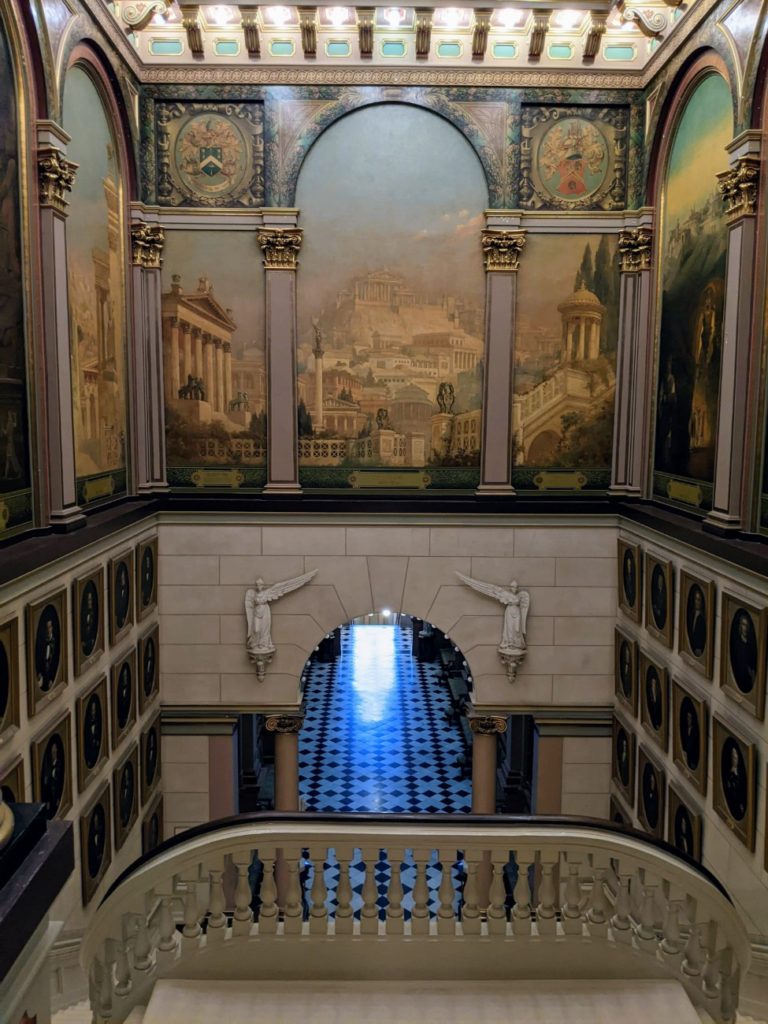
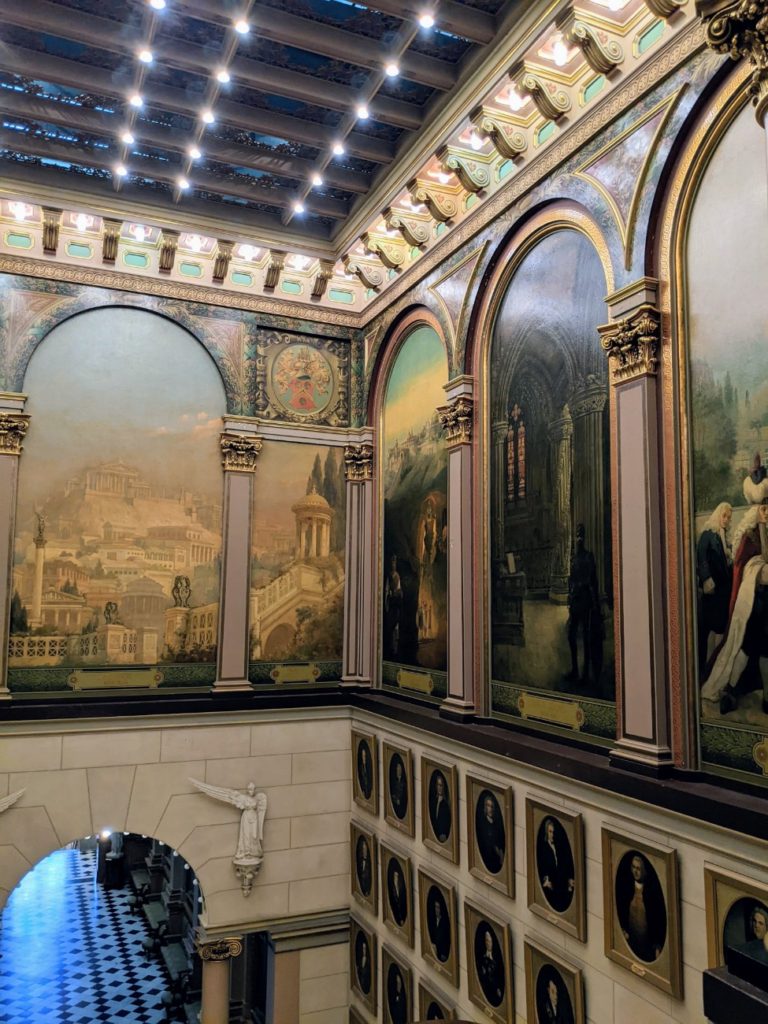
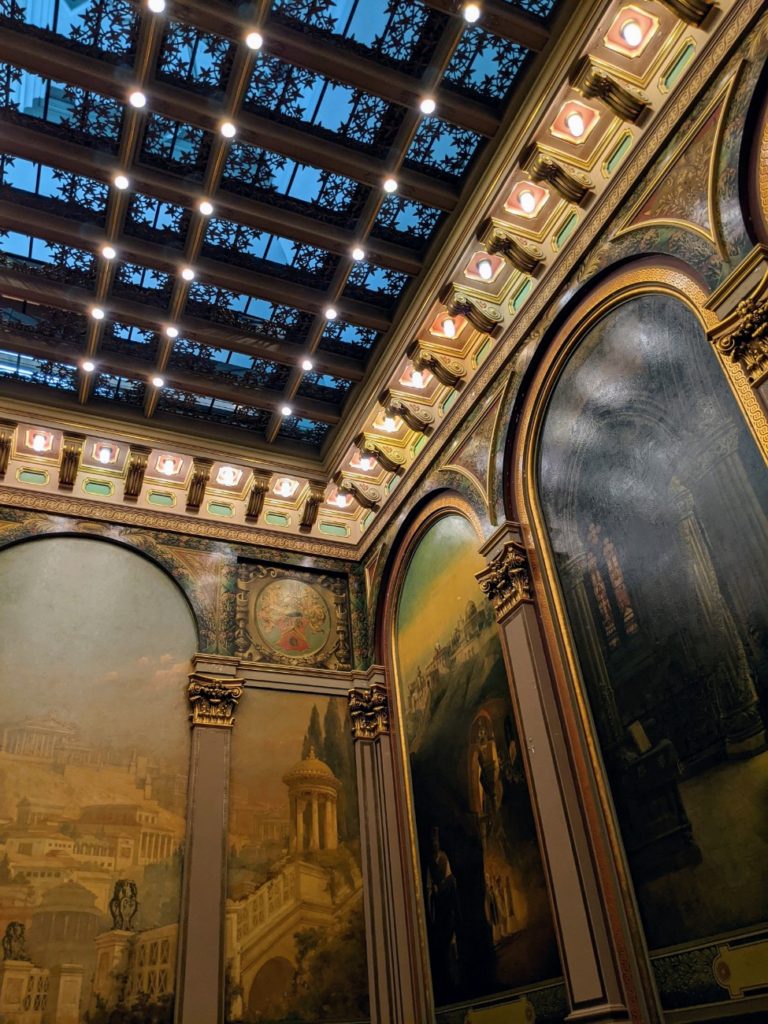
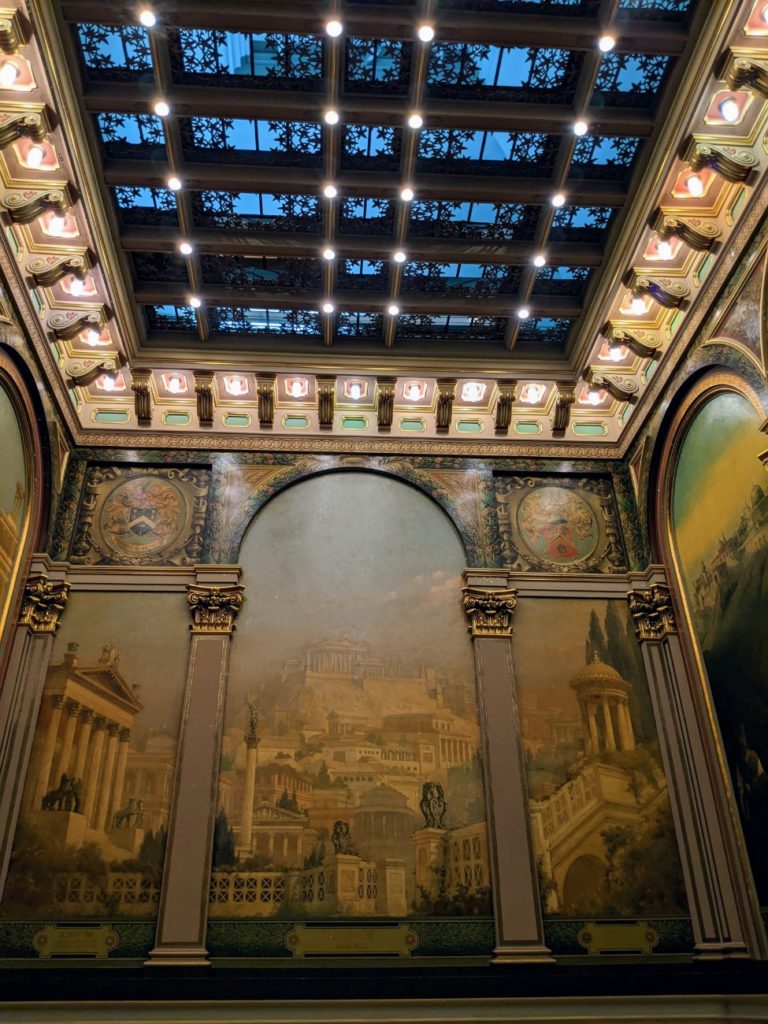
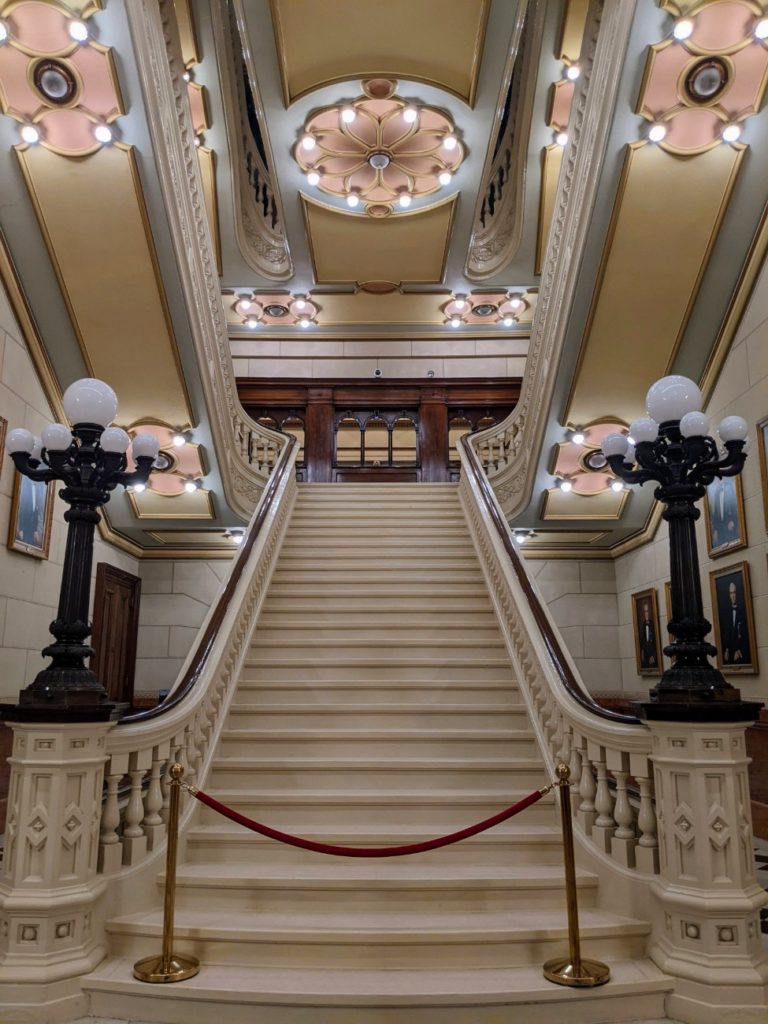
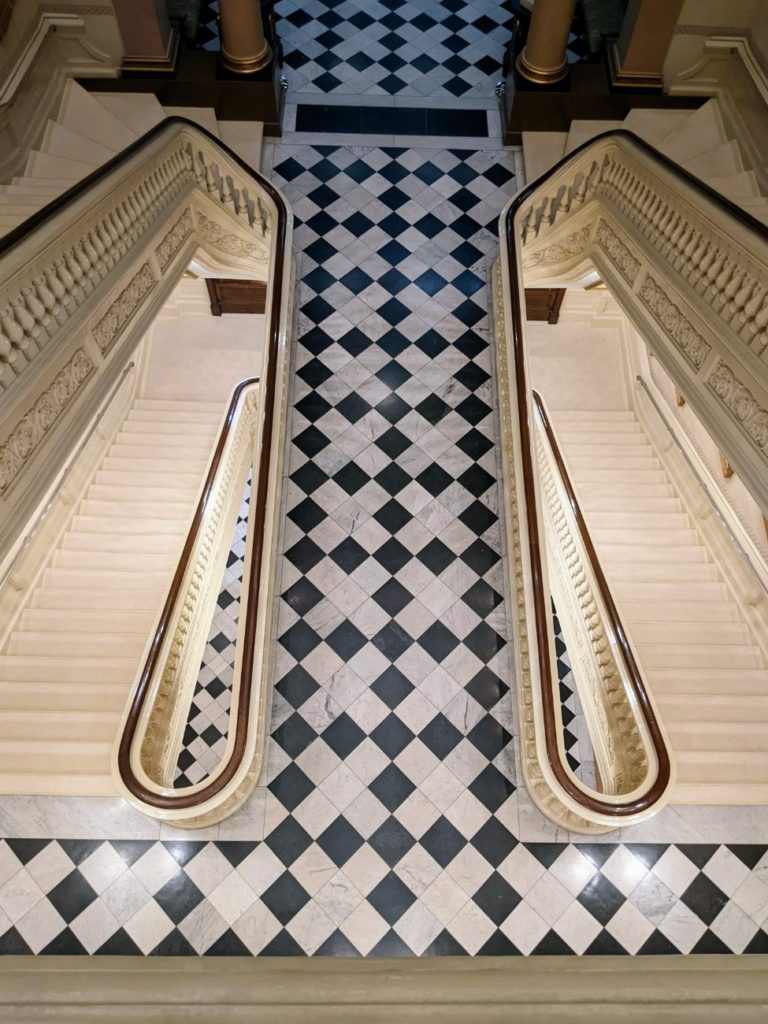
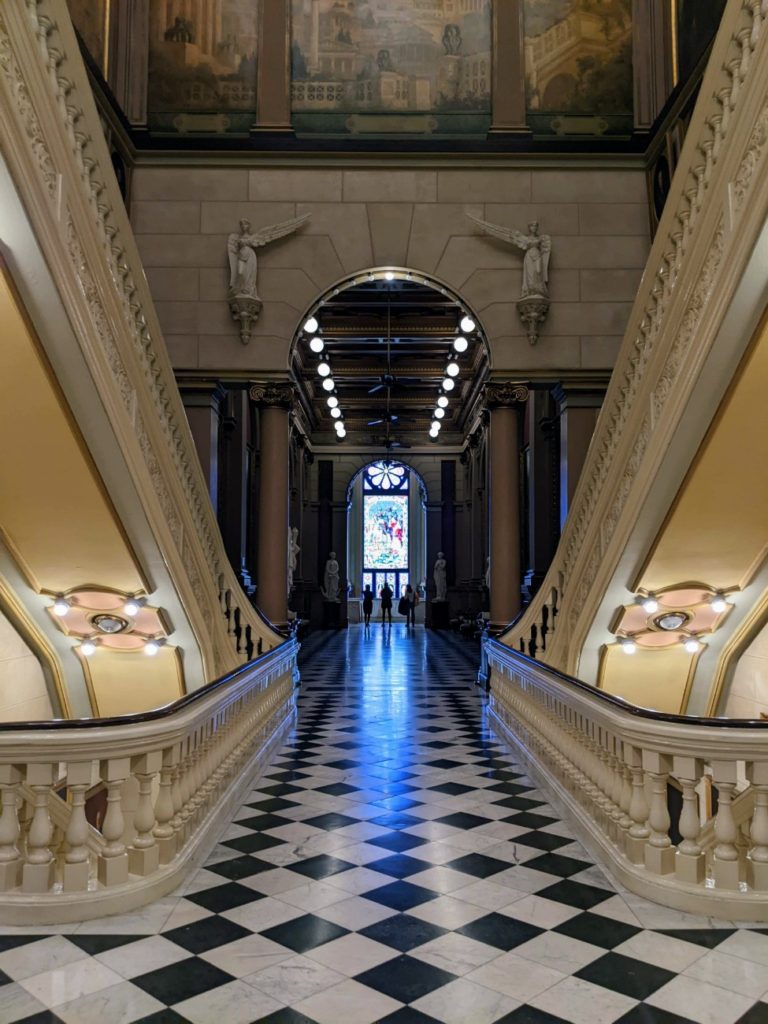
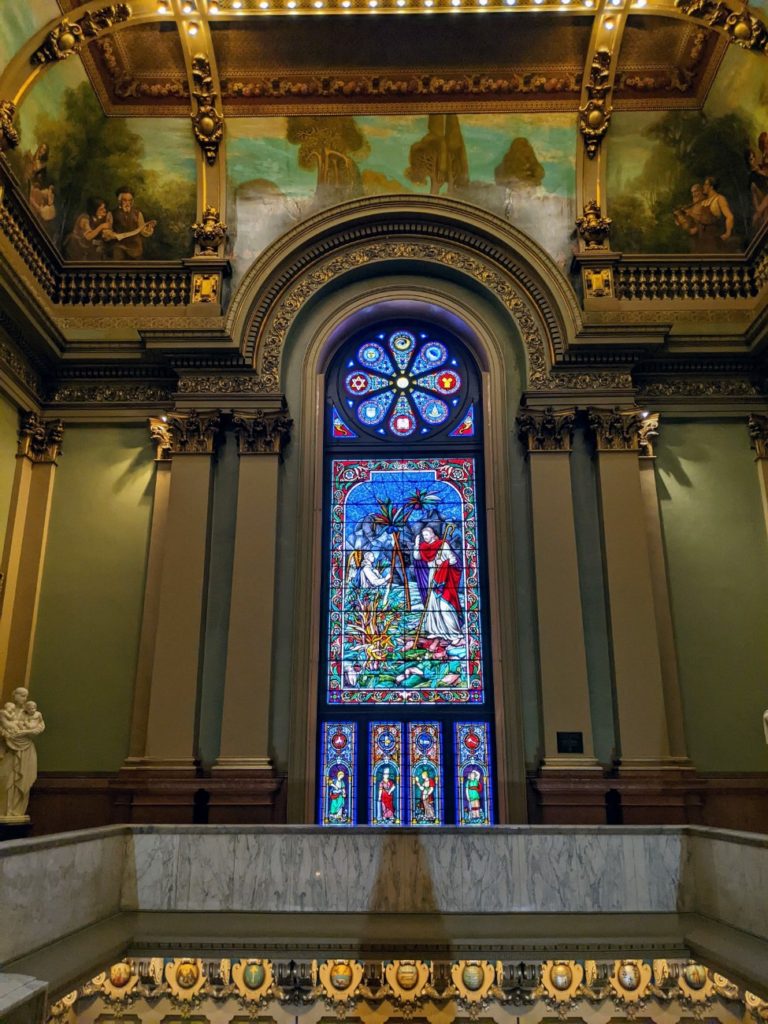
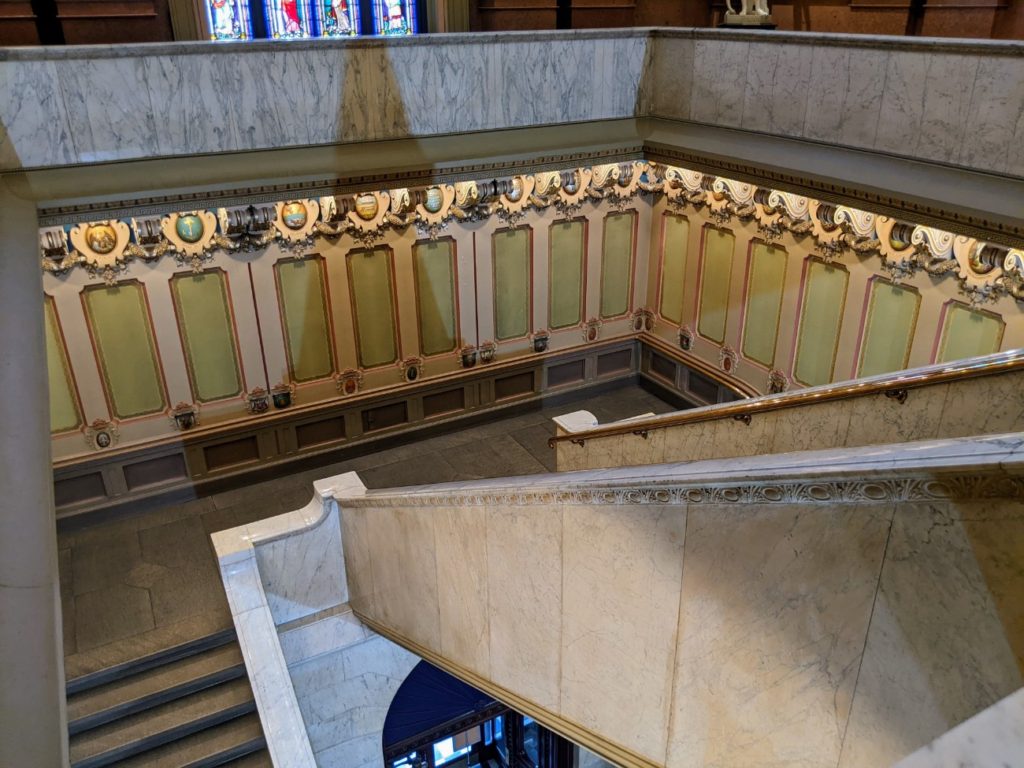
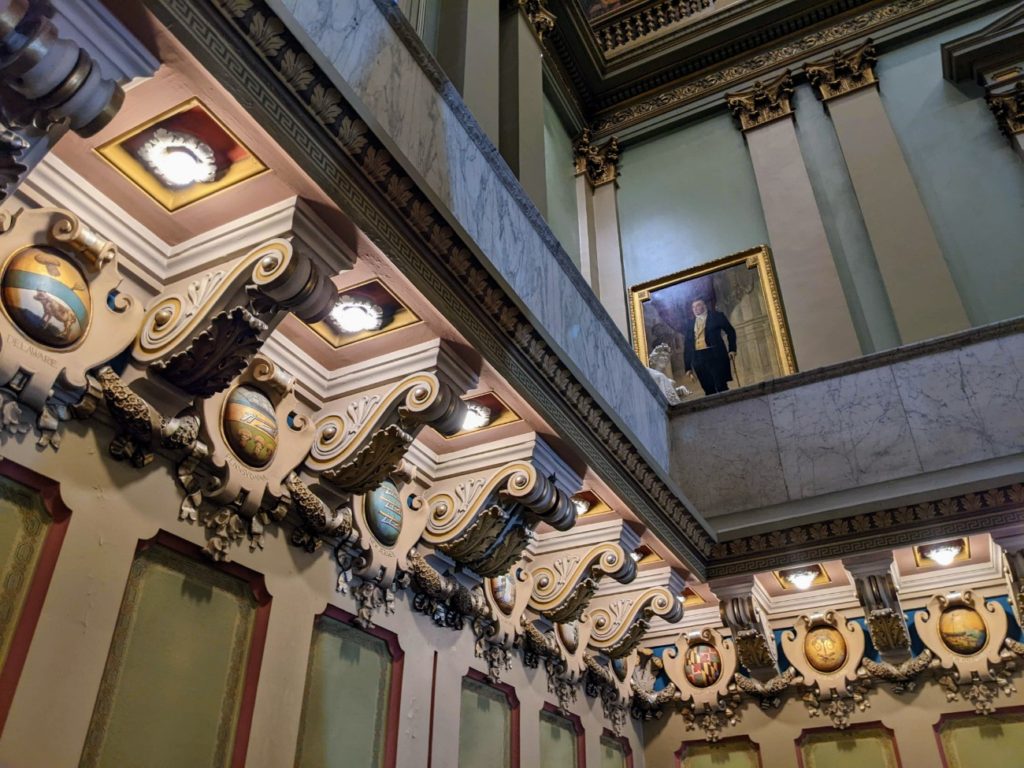
Oriental Hall
The first hall visited is the mind-blowing Oriental Hall. While I dislike the vague Asian name, the interior is stunning. Keep in mind that the electric lights were put in much later, and yet they look like they are integral to the design of the ceiling.
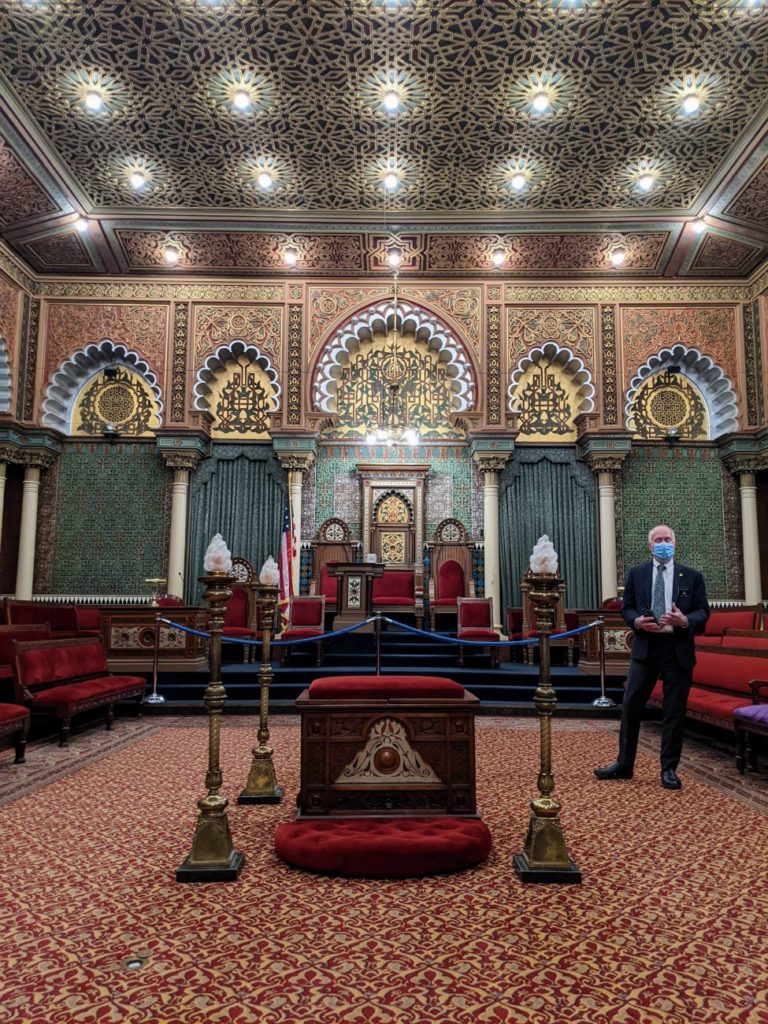
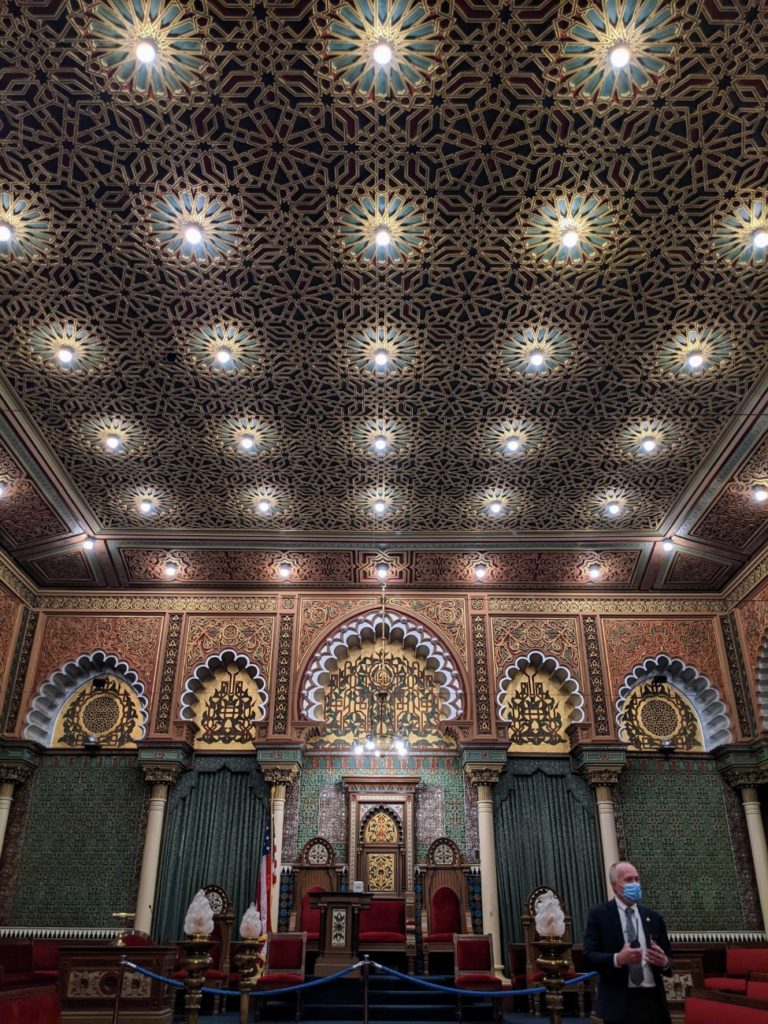
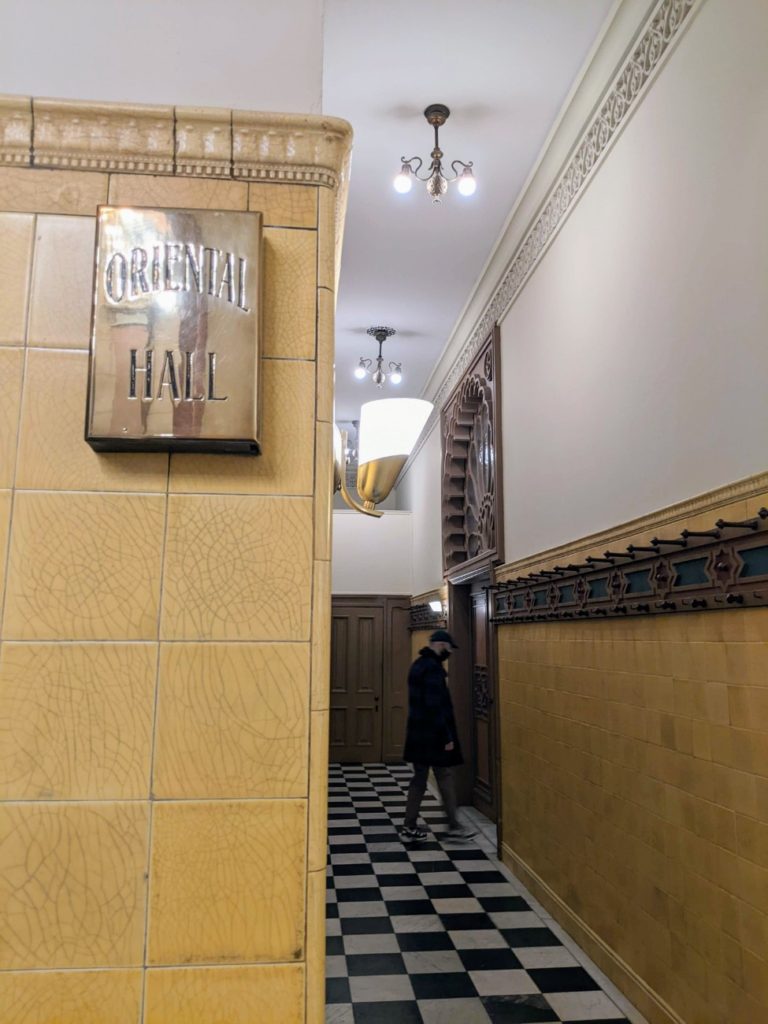
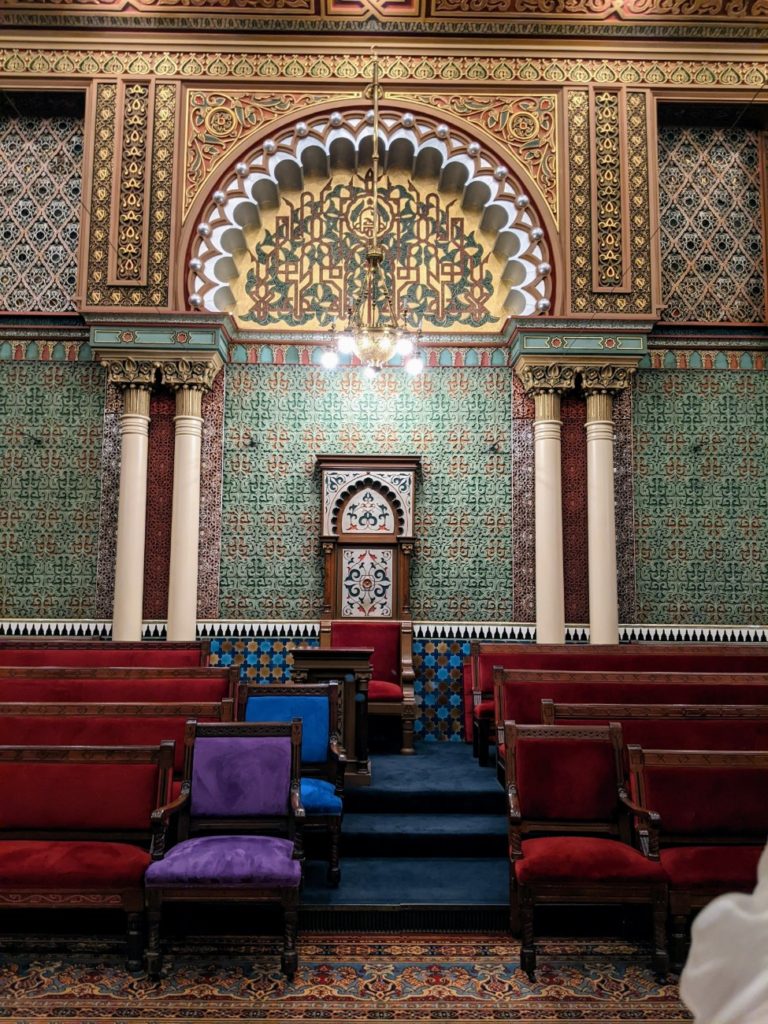
The room is set up for what a typical Masonic meeting would require. Which seems to be the general population along the sides, the master’s throne-like chair on one end and the assistant master (I don’t really remember the exact terms) mirrored on the other, and a bench with three torches in the middle. Everyone apparently has a place in these meetings.
Keep in mind that my interest in the building is more architectural and less about Freemasonry itself. The rest of my tour group was made up of men, most of which seemed to have some interest in becoming masons or already had some connection to it. I don’t really want to know what goes on in these rooms. I’m just here for the interior design.
Gothic Hall
Next up is Gothic Hall, which I think is the largest meeting room they have, counting by how many folks they can fit in it. (It also has the strongest church-fellowship-hall vibes.) The hall was expanded to be even bigger at one point. You can see where an outer set of arches used to be hallways.
Rich reds define the carpet and wall hangings while dark carved wood abounds in the rest of the space. Several throne-like chairs line the top end, and the most throne-iest is encouraged as a photo-op. A set of arched doors at the bottom end used to lead straight to a dining hall until it was moved to another location.
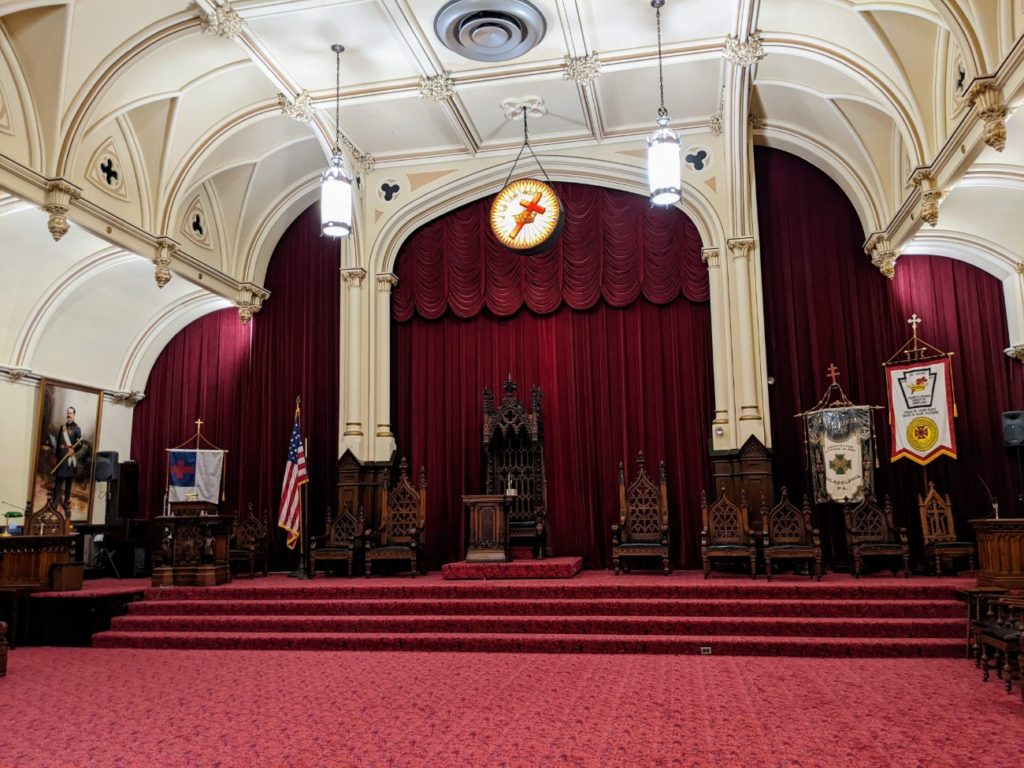
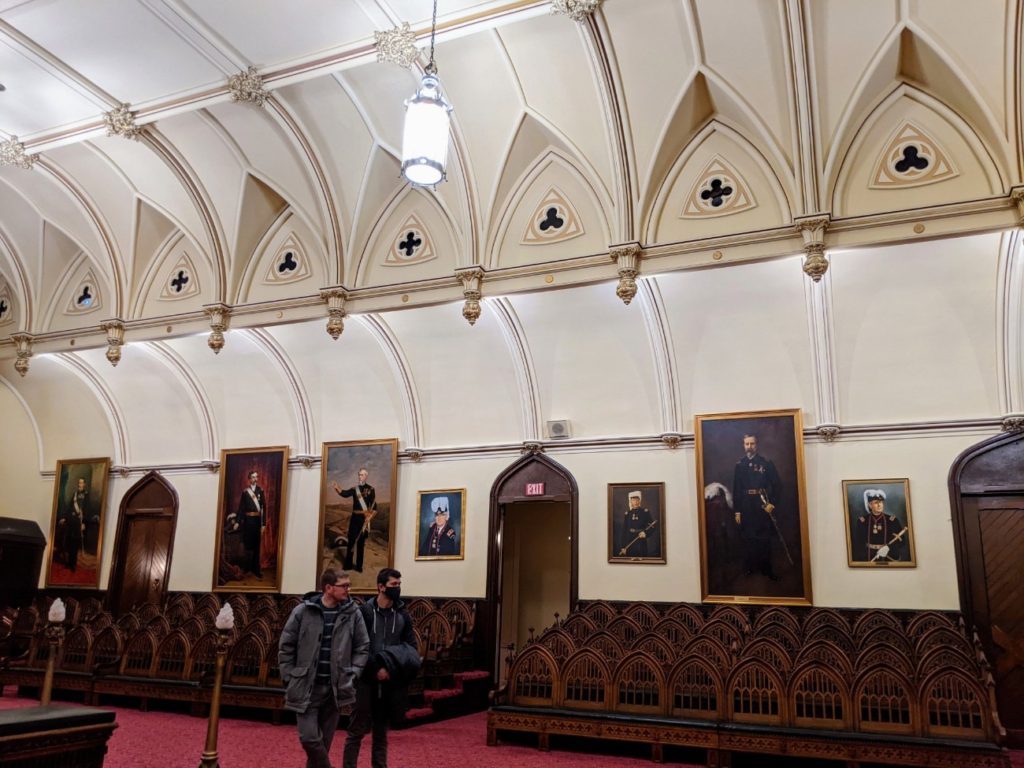
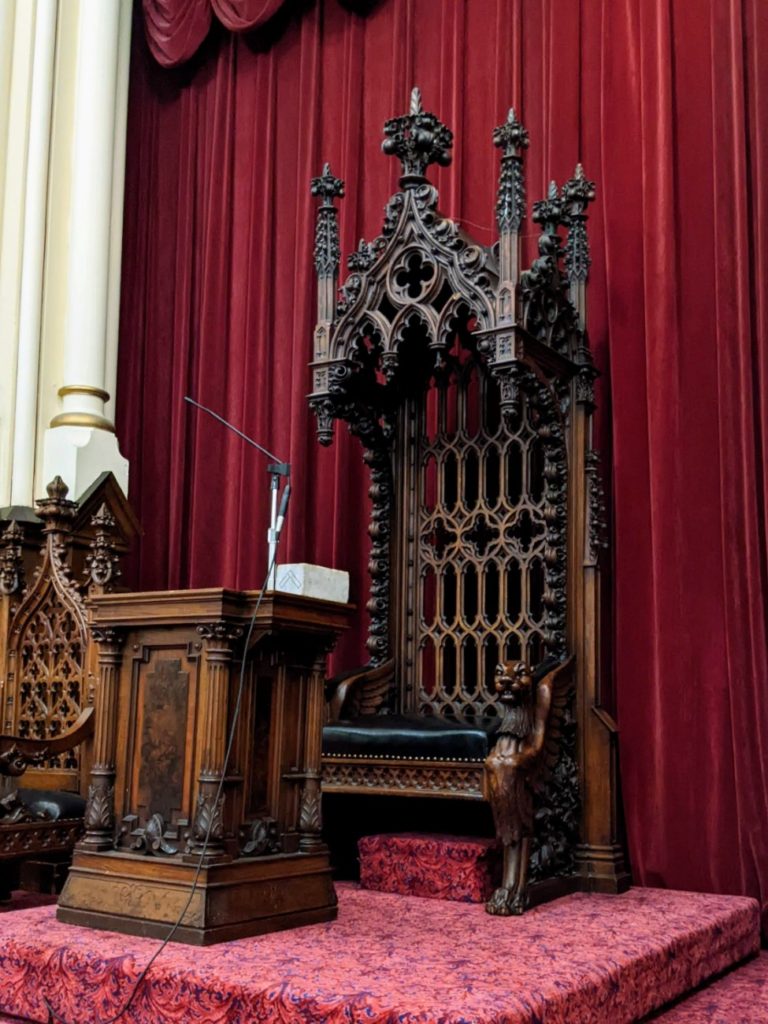
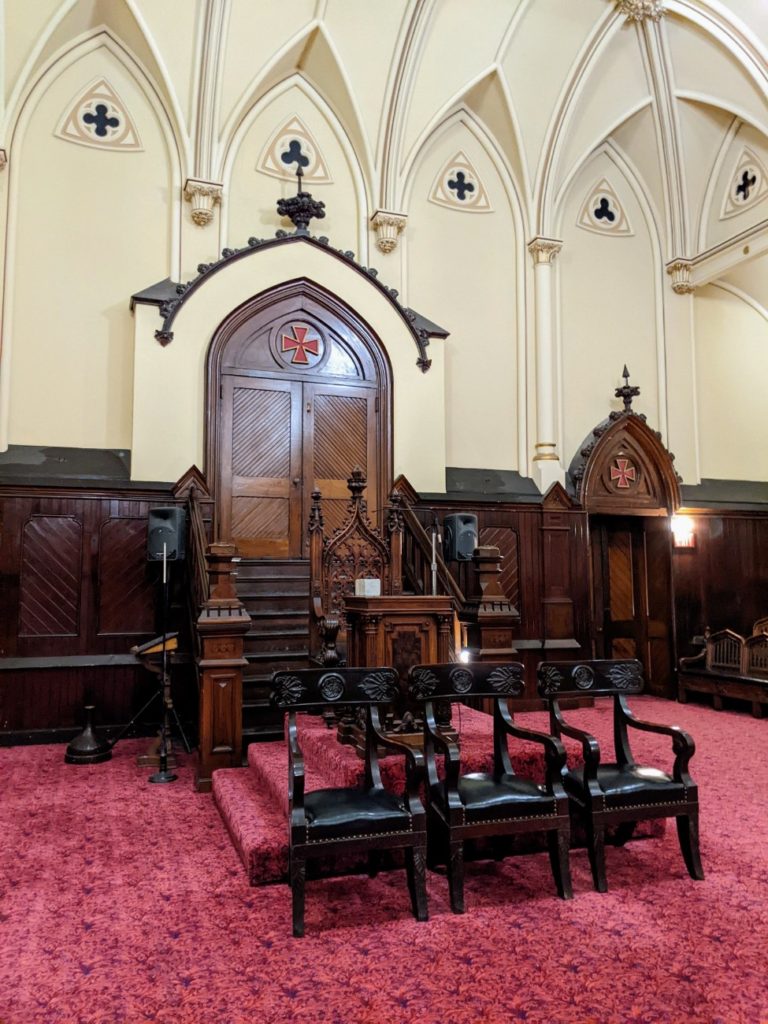
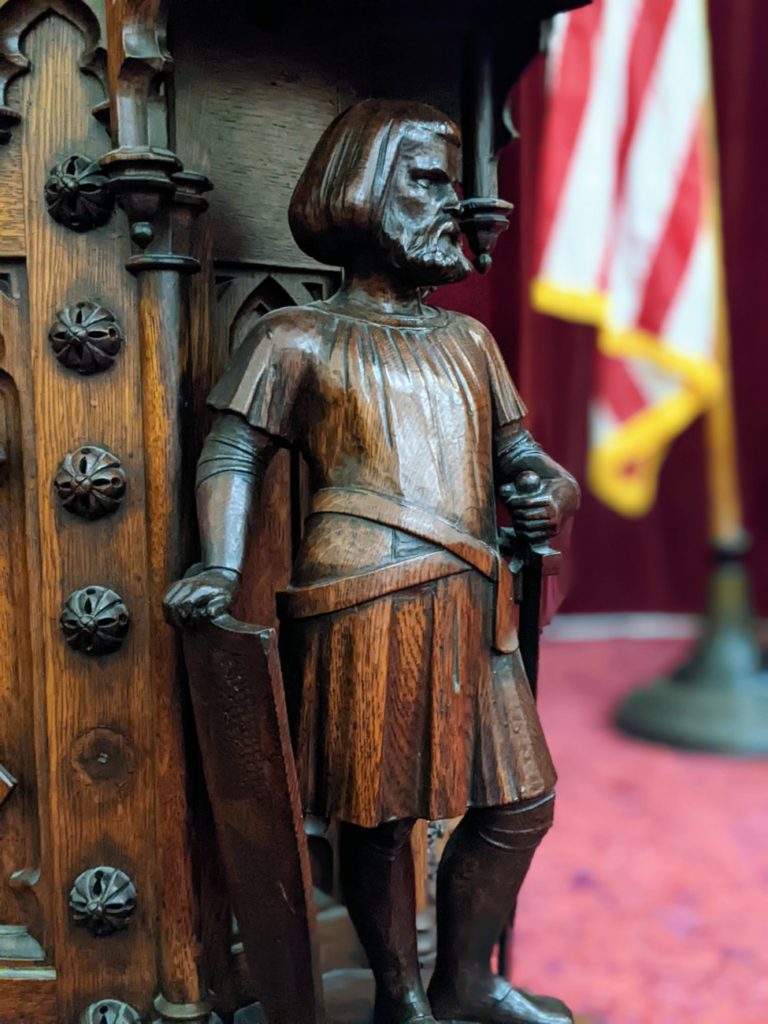
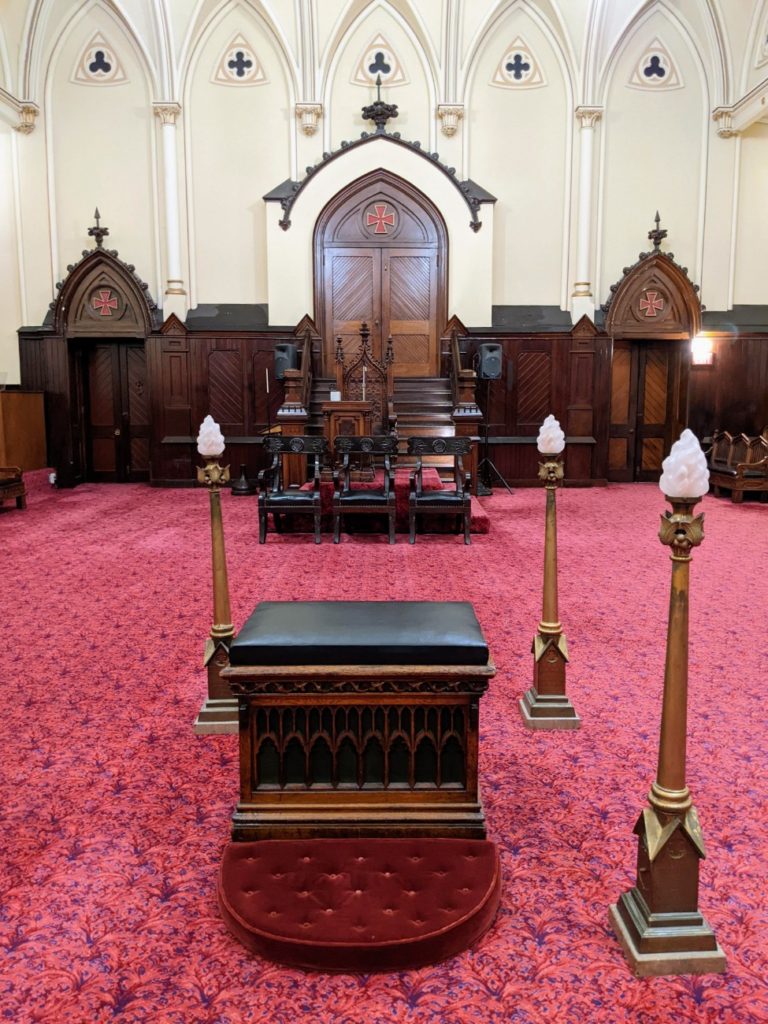
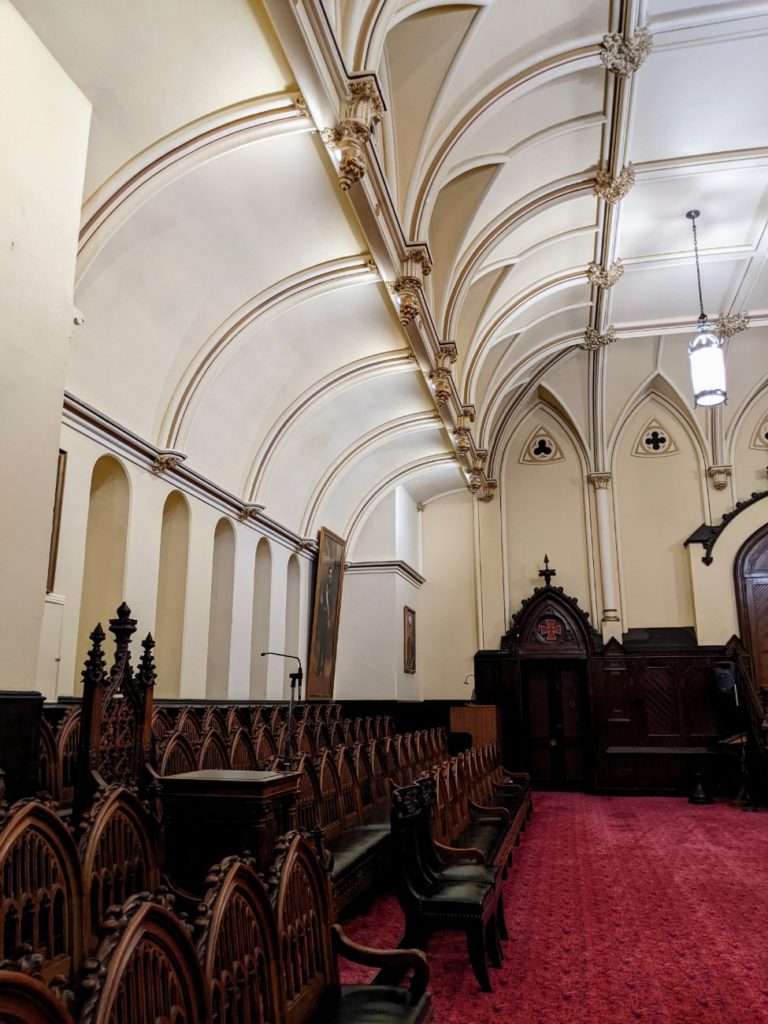
Ionic Hall
Compared to the Gothic and, especially, the Oriental Halls, the Ionic is a bit more boring. The Ionic Hall is styled along more classical lines, taking its name from the Ionic-topped columns along the walls. It all feels a bit more Federal, which is appropriate for Philadelphia.
Again, notice how well they’ve incorporated electric lights into the existing design. (I think there used to be more windows.)
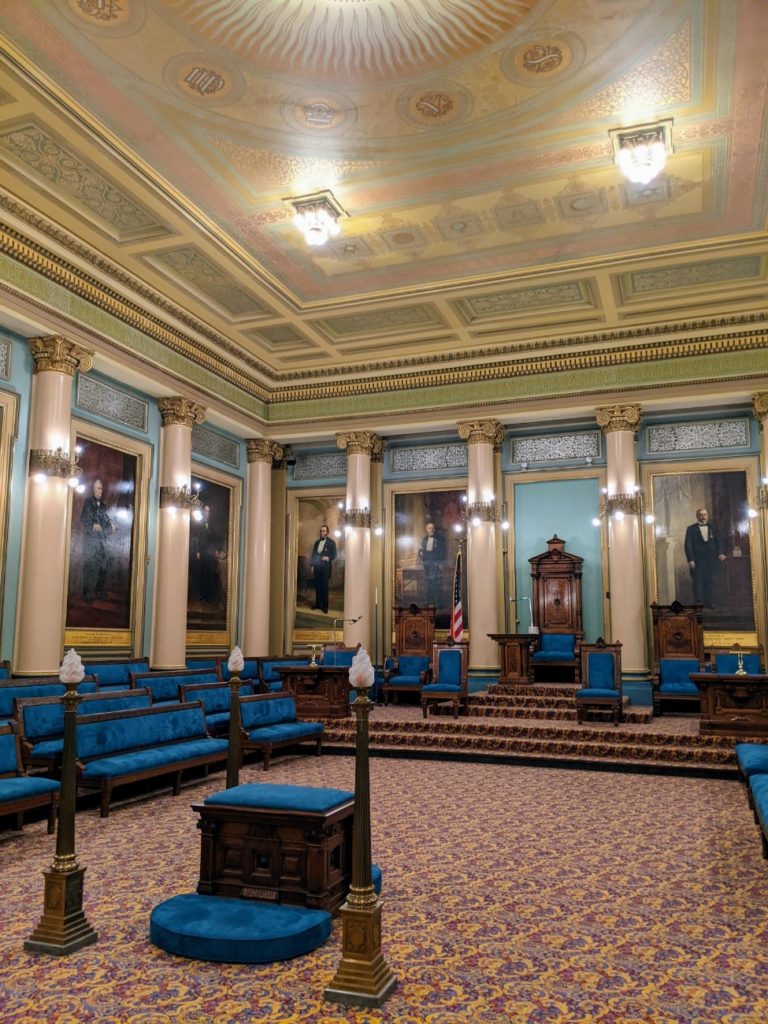
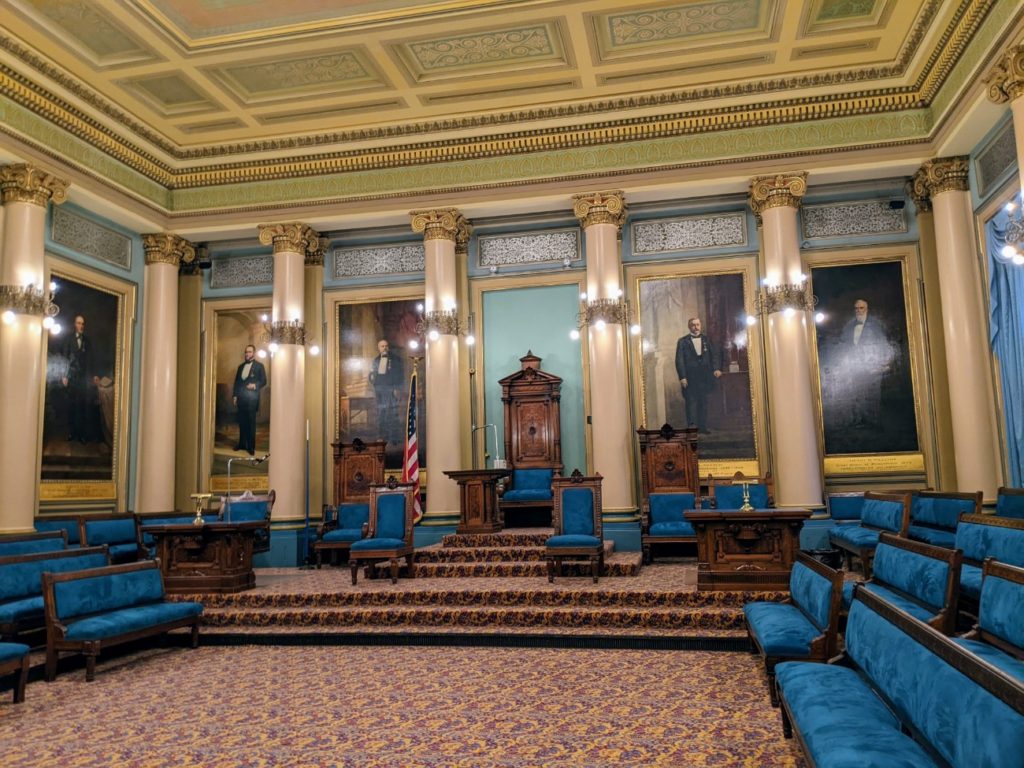
Egyptian Hall
As if to make up for the Ionic Hall, the Egyptian Hall has more theming than a ride at Universal Studios. Straight up sphinxes, pyramids, hieroglyphs, ankhs, and more cover the ceilings, the walls, and the floors of this room.
There are columns, mosaics, mood lighting, even an overhead lamp signifying light to the world or something like that. “Richly decorated” would be an understatement.
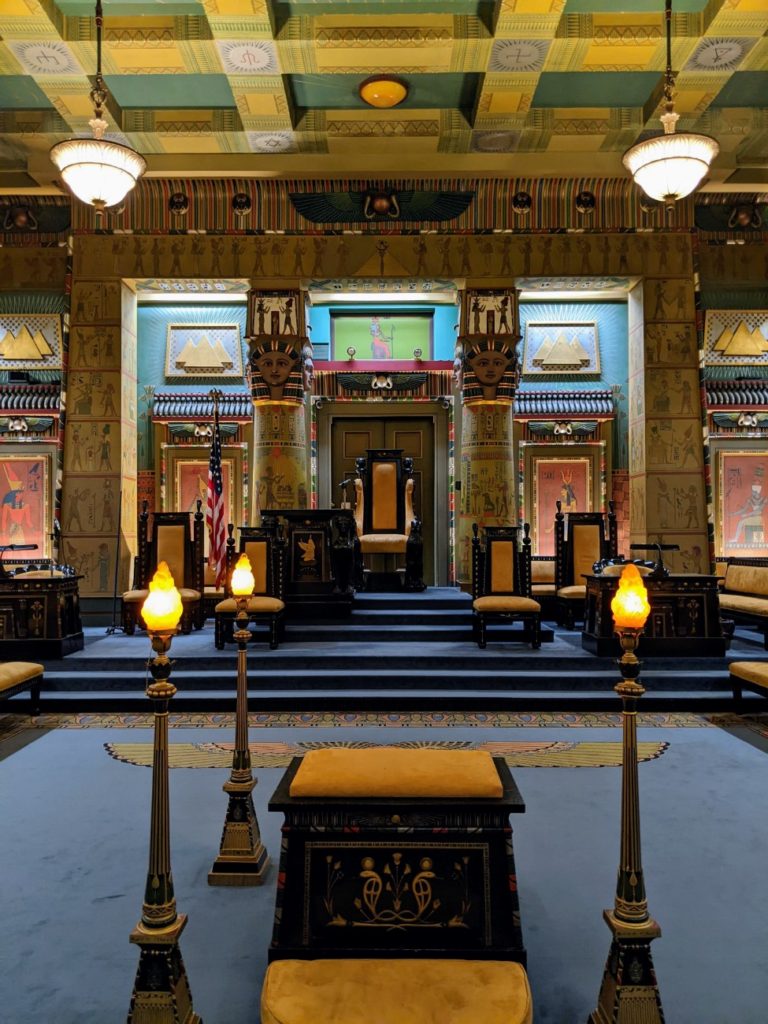
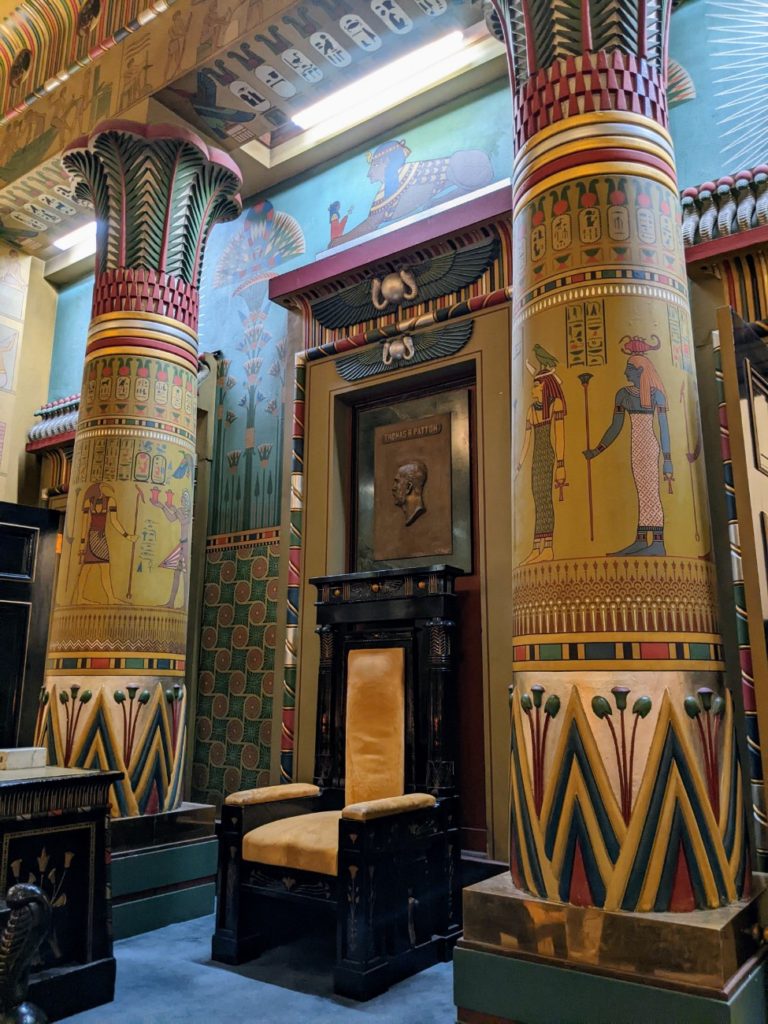
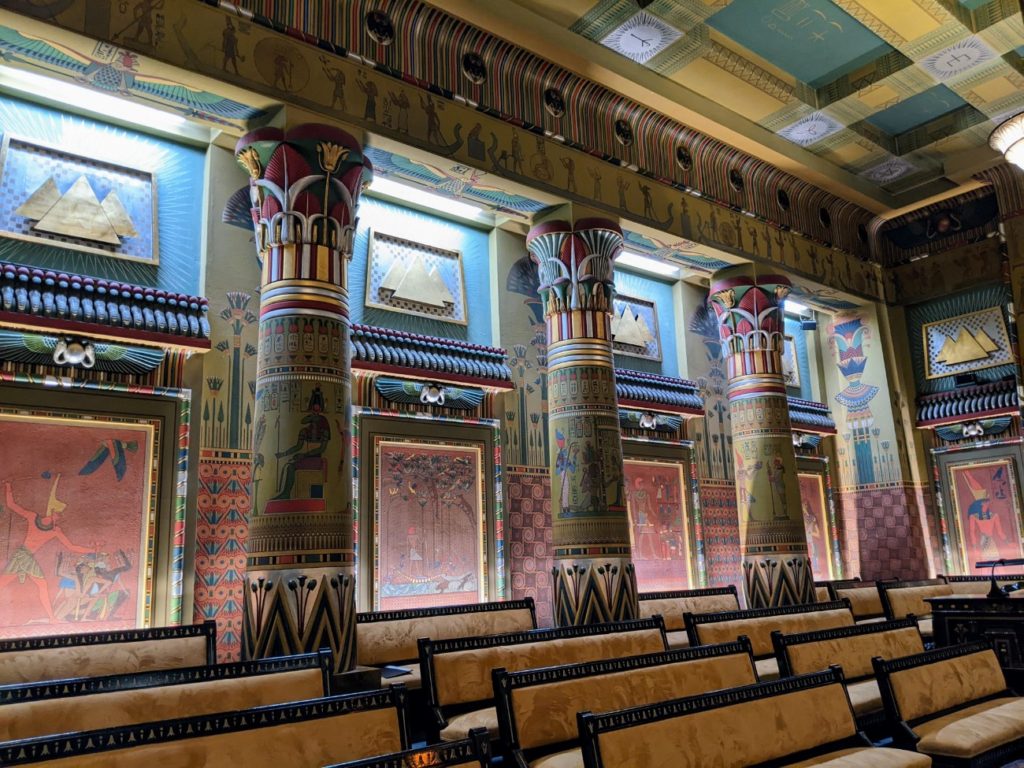
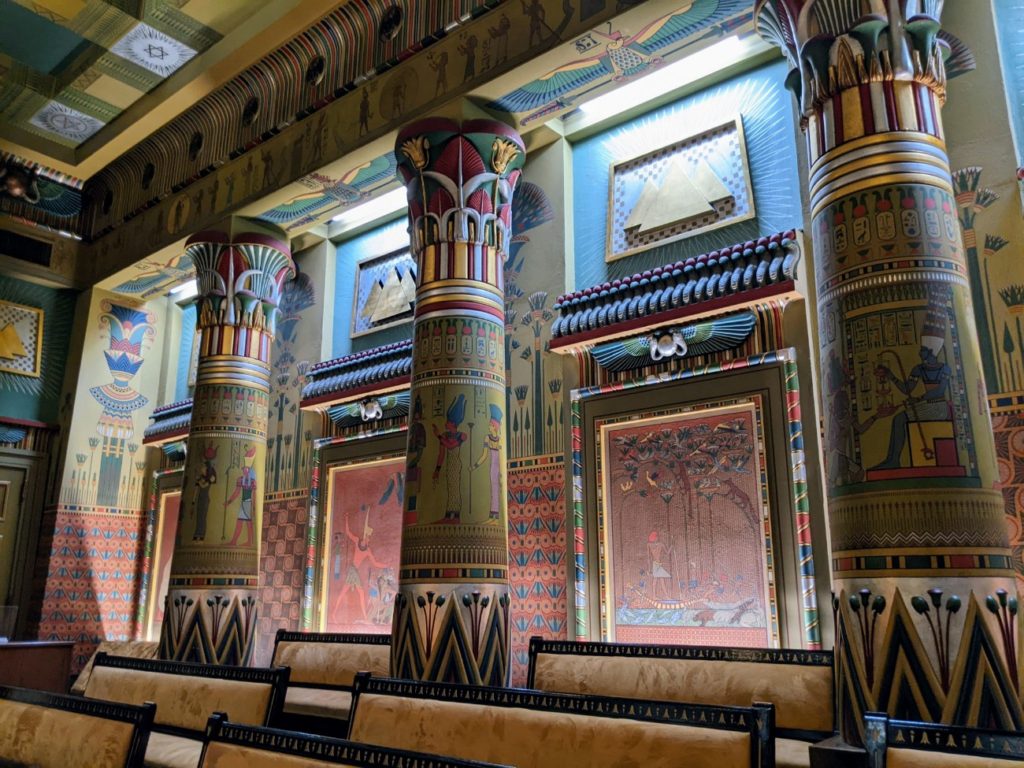
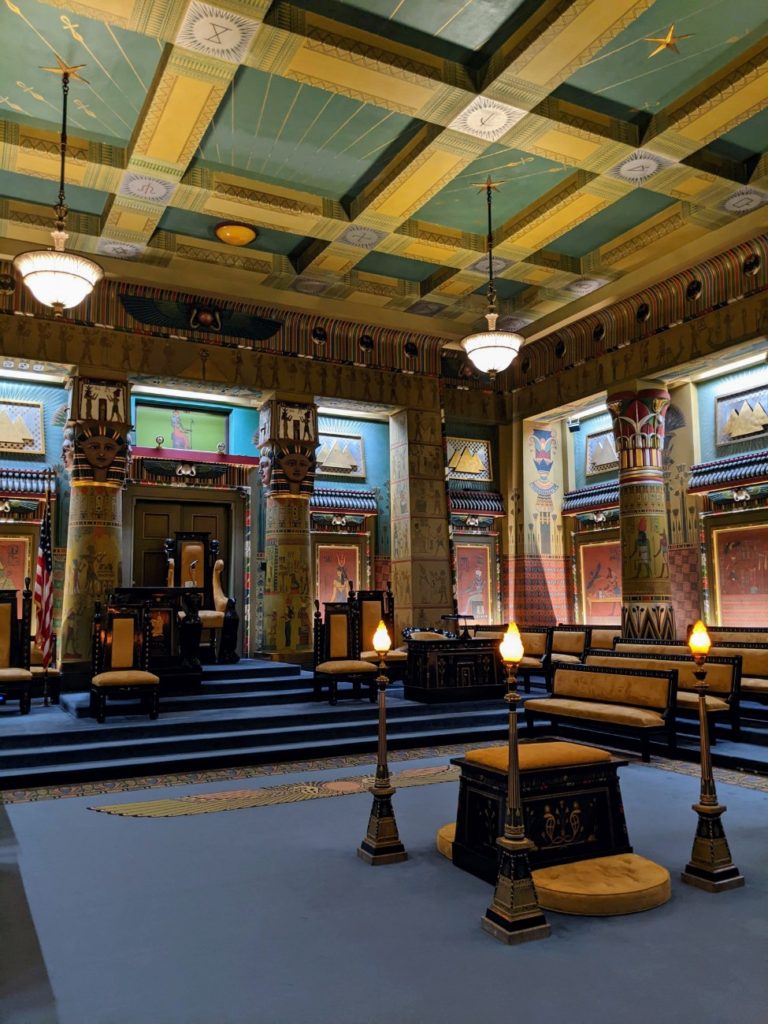
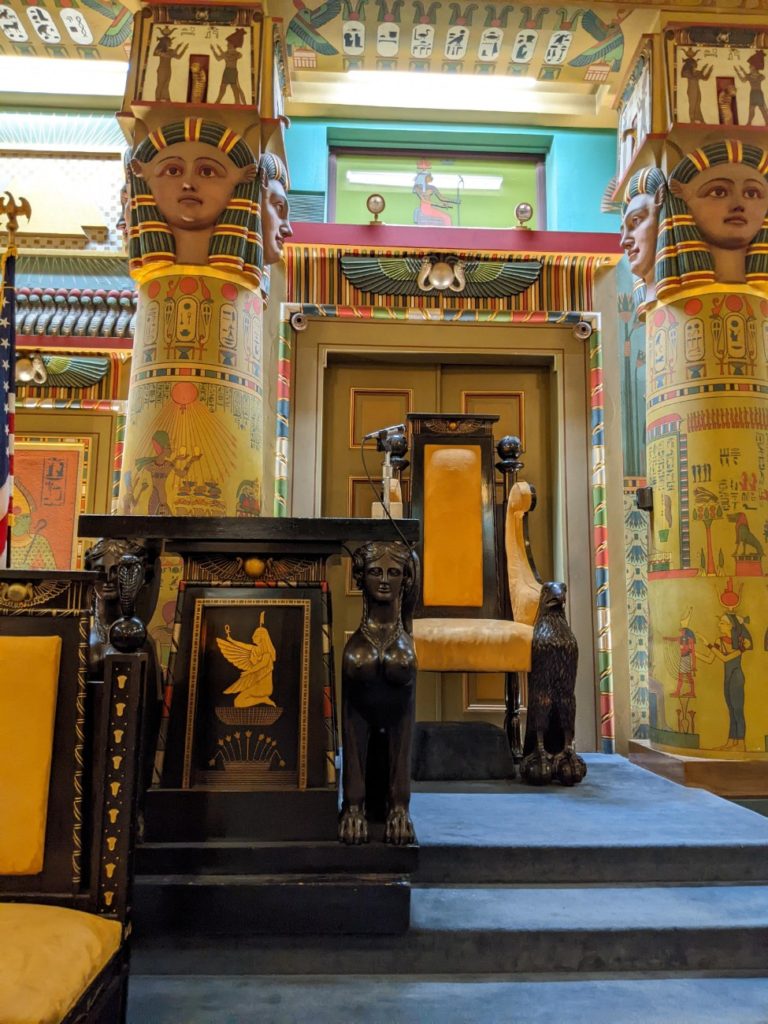
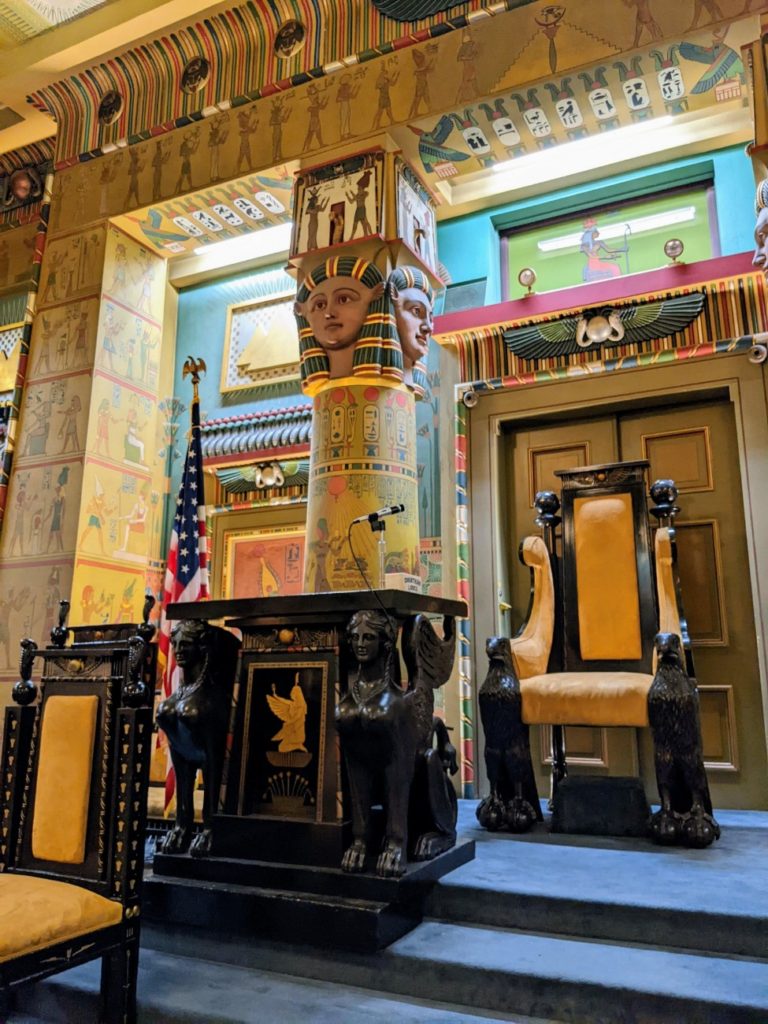
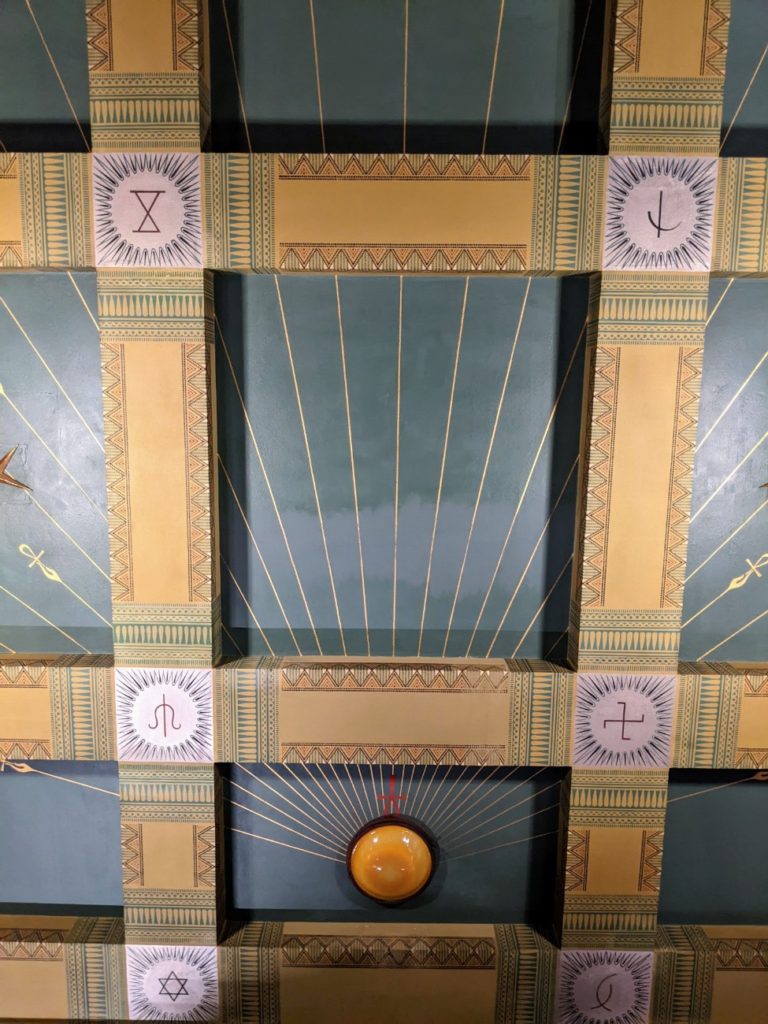
Norman Hall
The Norman room looks Medieval with disigns similar to illuminated text in hand-copied bibles. Mosaics depict figures on the walls. And burnished gold and deep blue adorn the walls and ceiling.
It’s only after seeing the Egyptian Hall does the Norman Hall fail to impress.
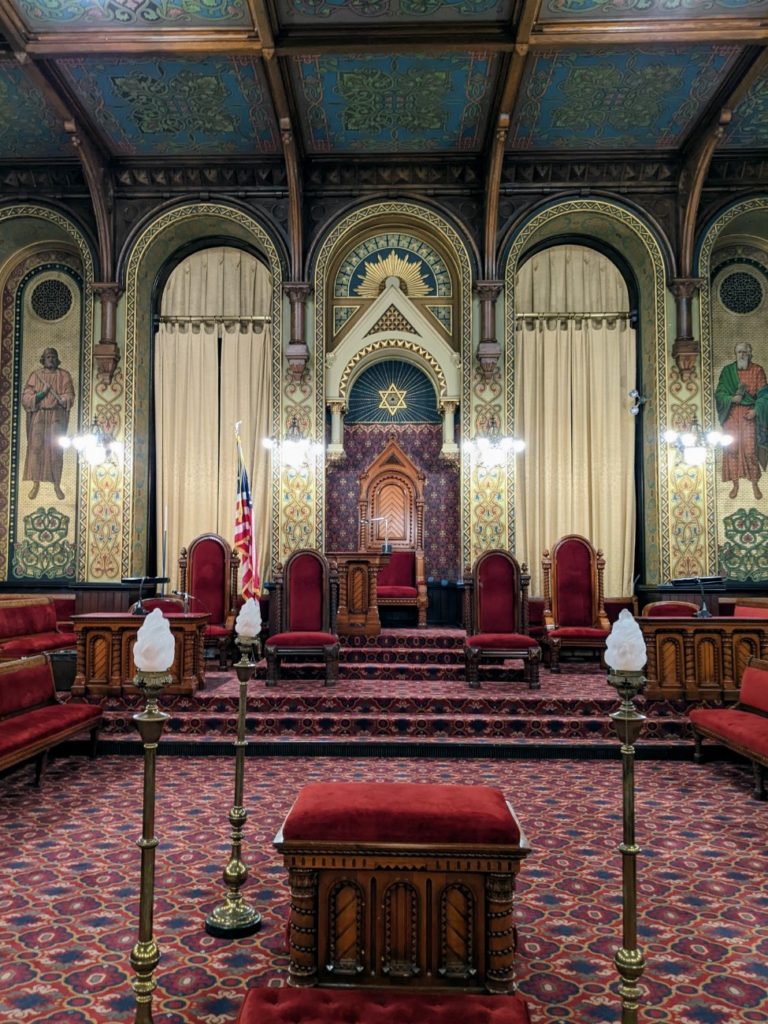
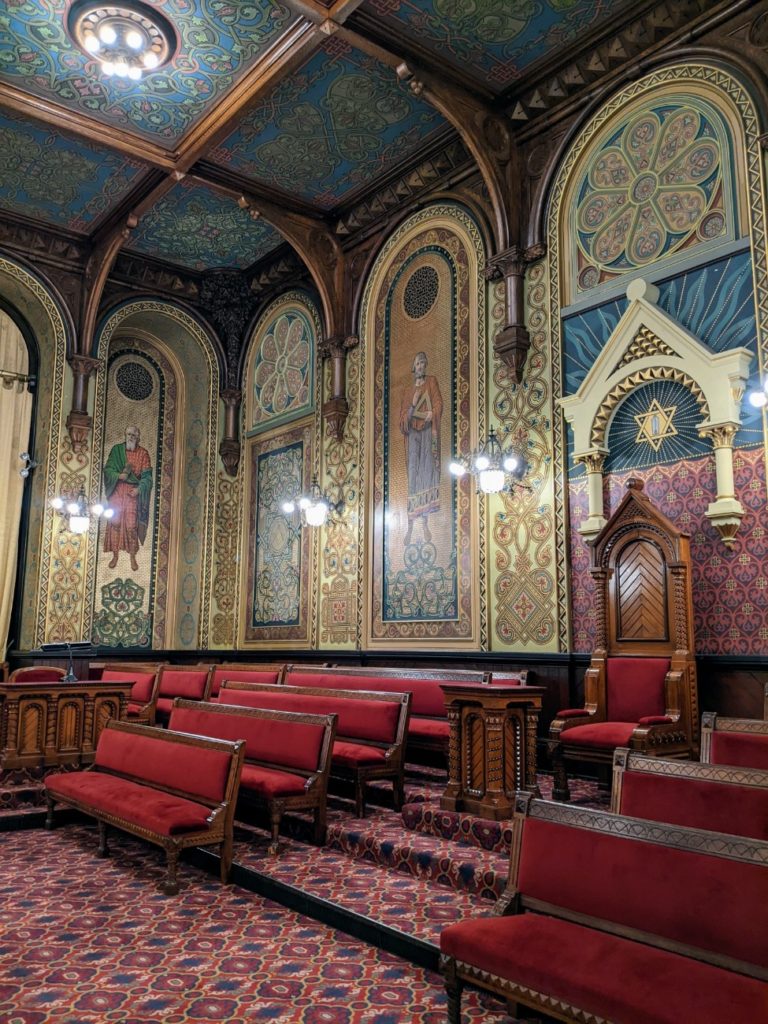
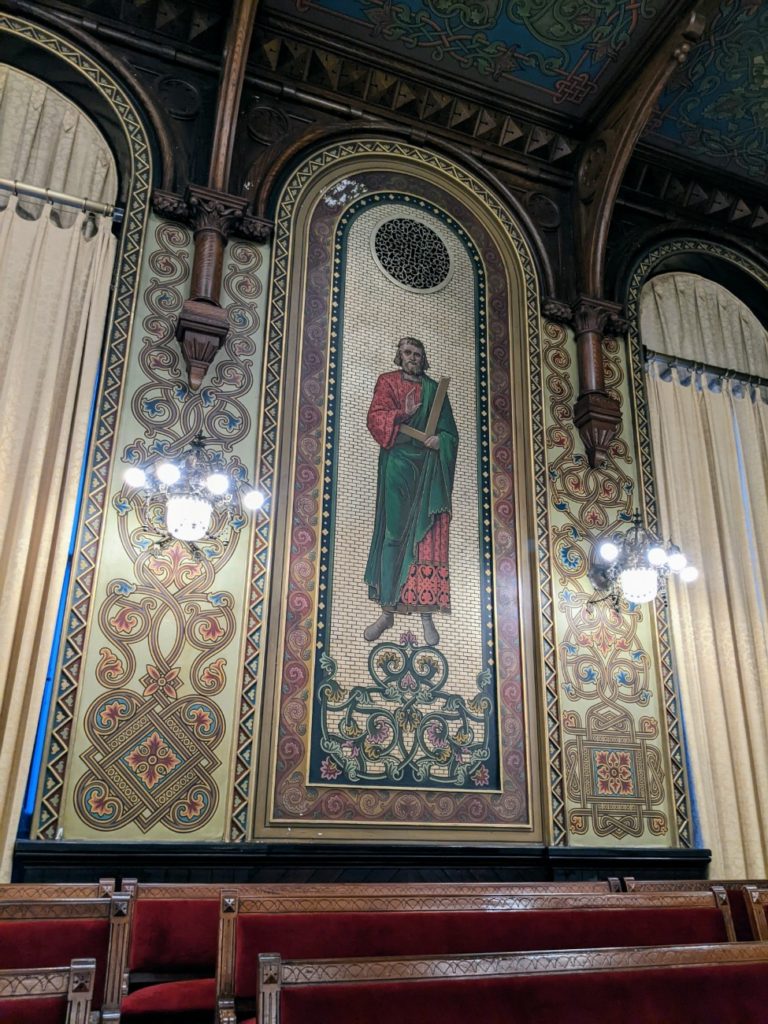
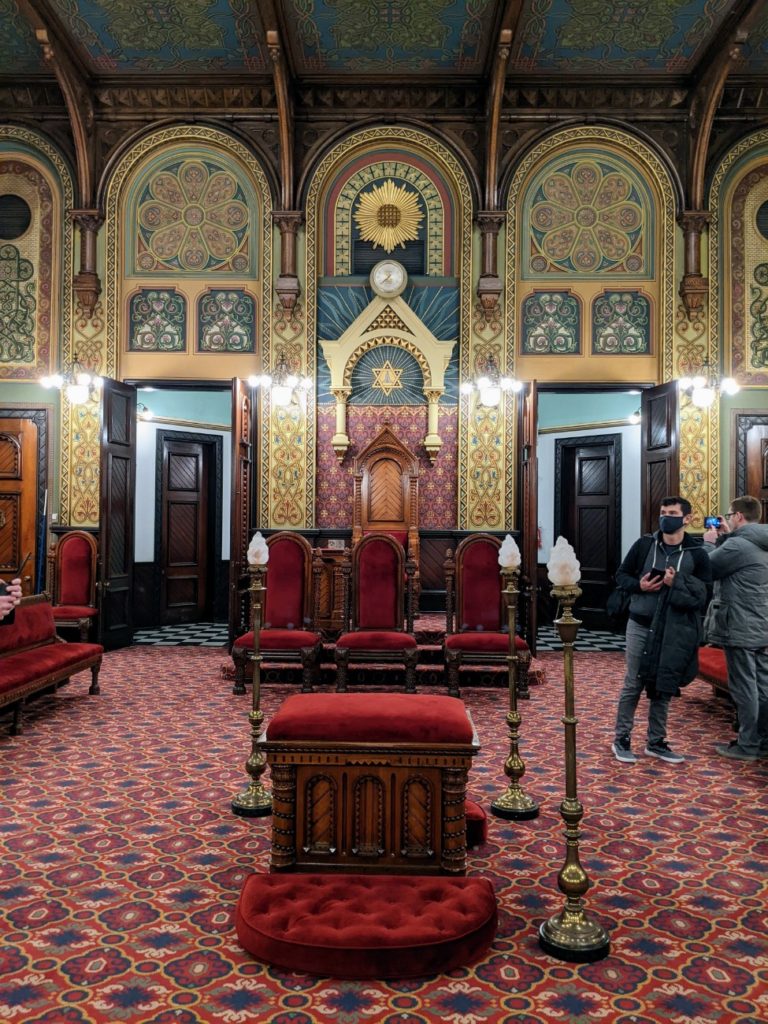
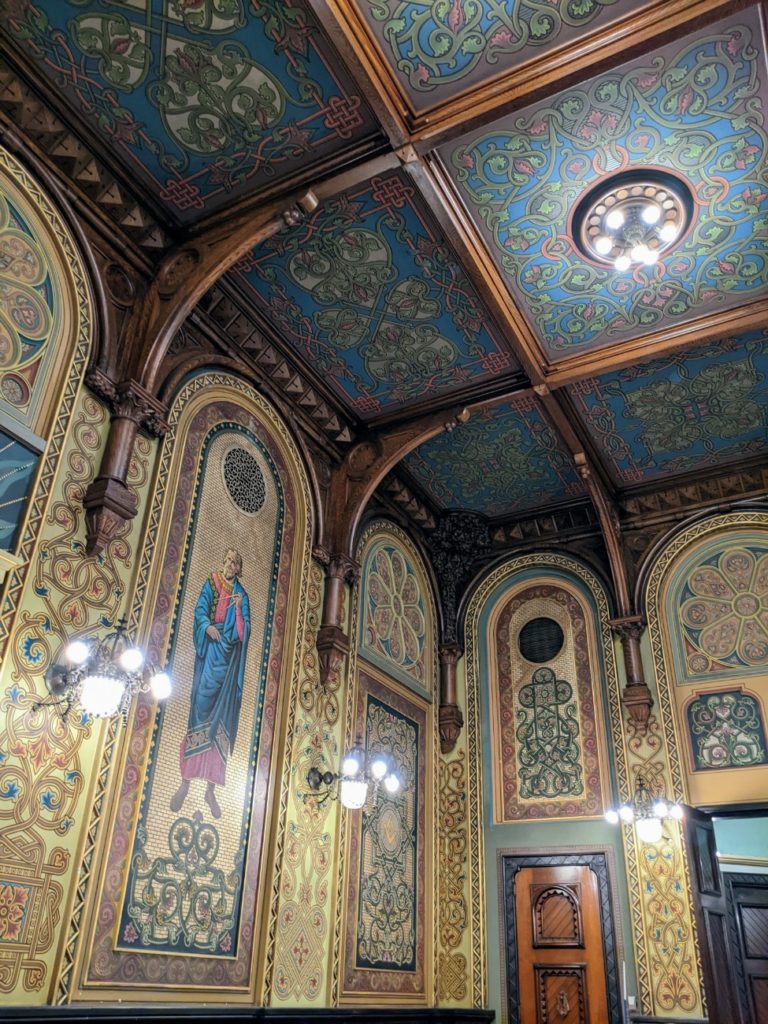
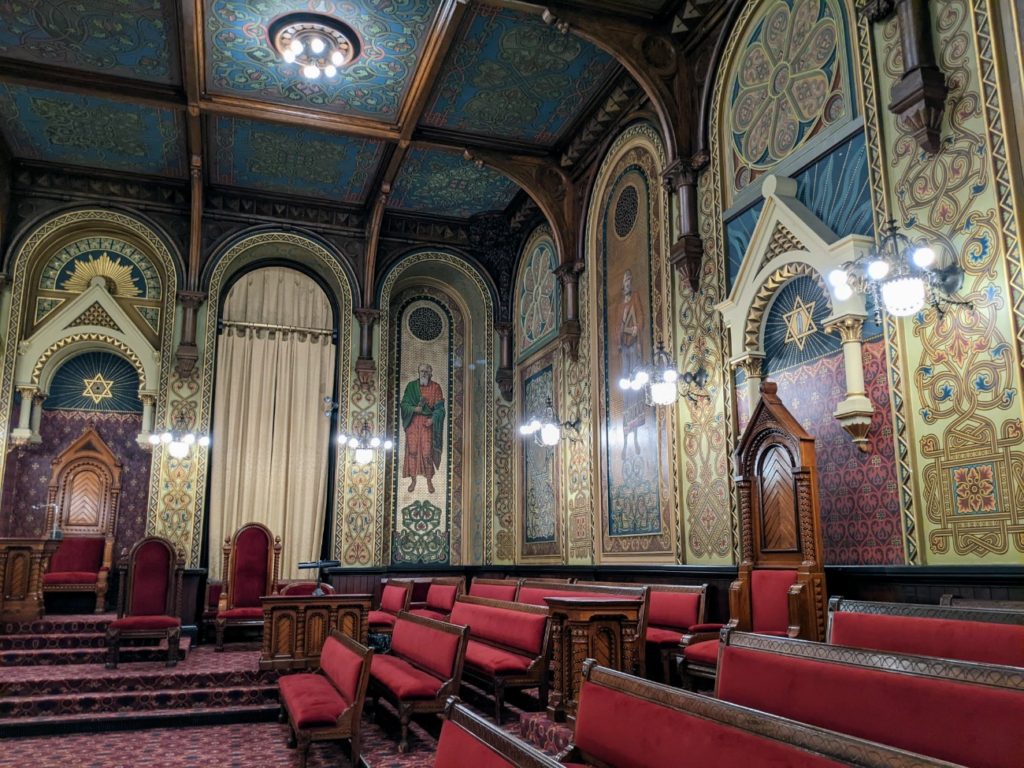
Renaissance Hall
The last two halls are the tallest in height. Renaissance Hall features stained glass windows and lighted arches high above. Even looking straight up, there is a stained glass medalion in the ceiling.
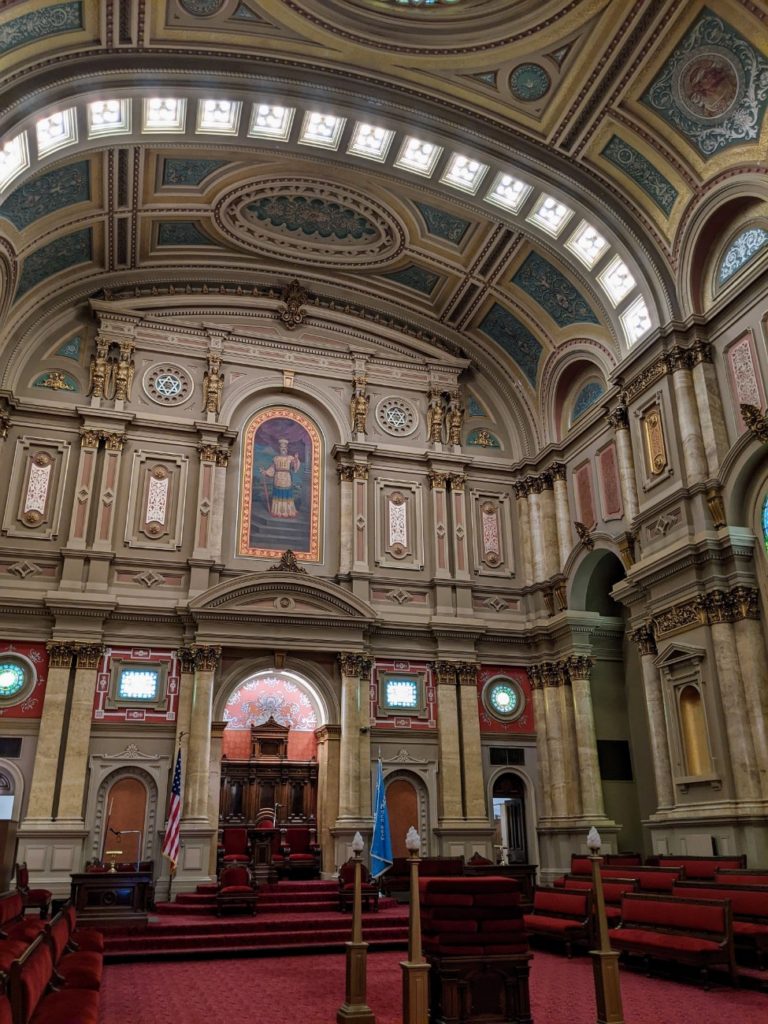
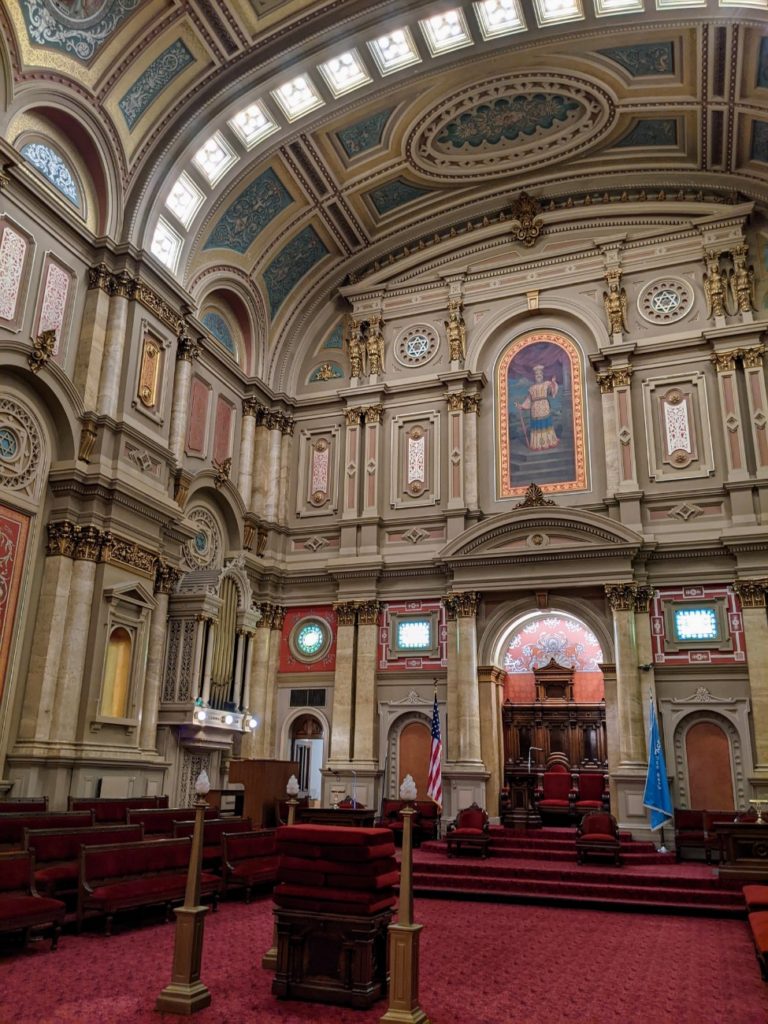
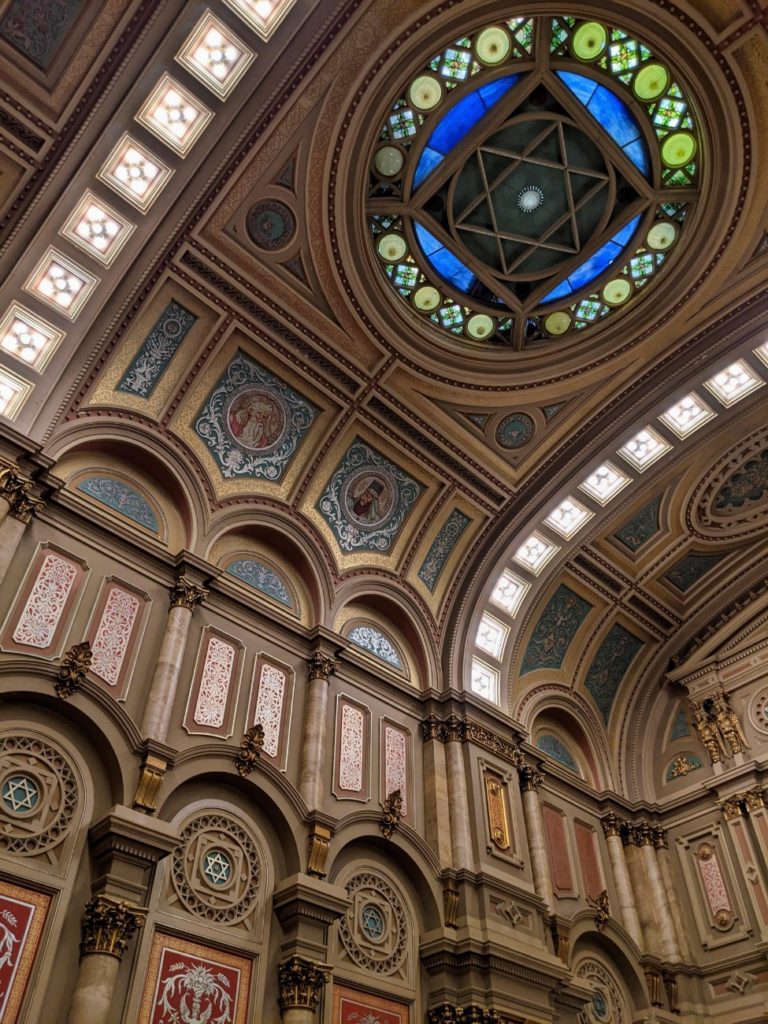
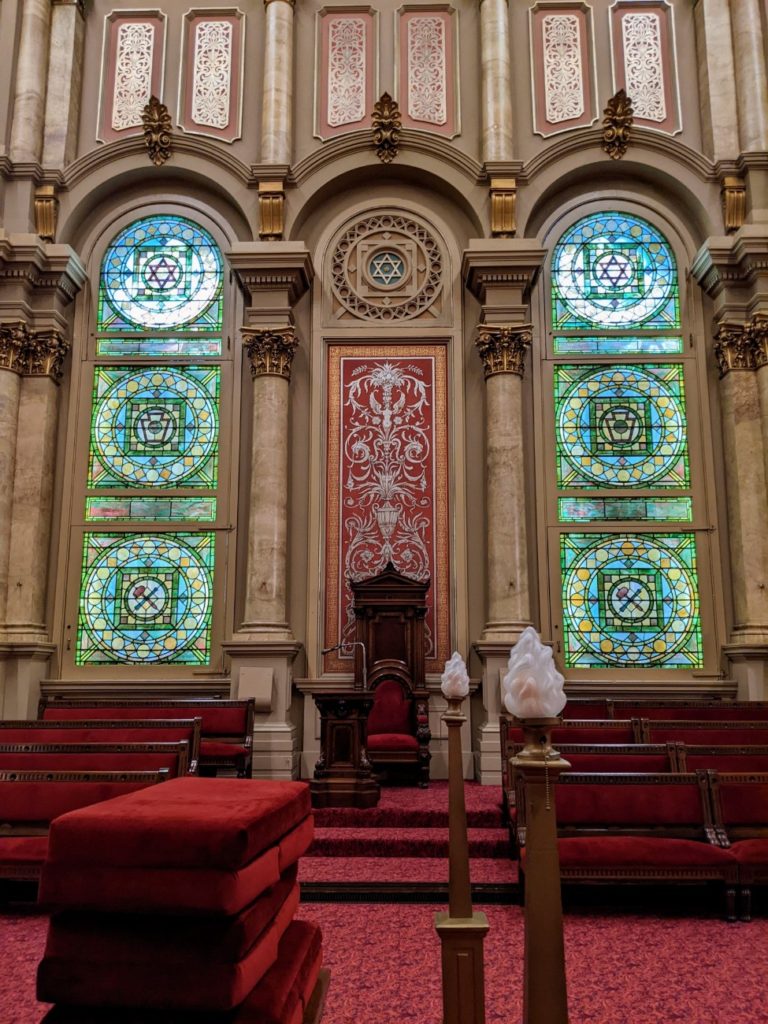
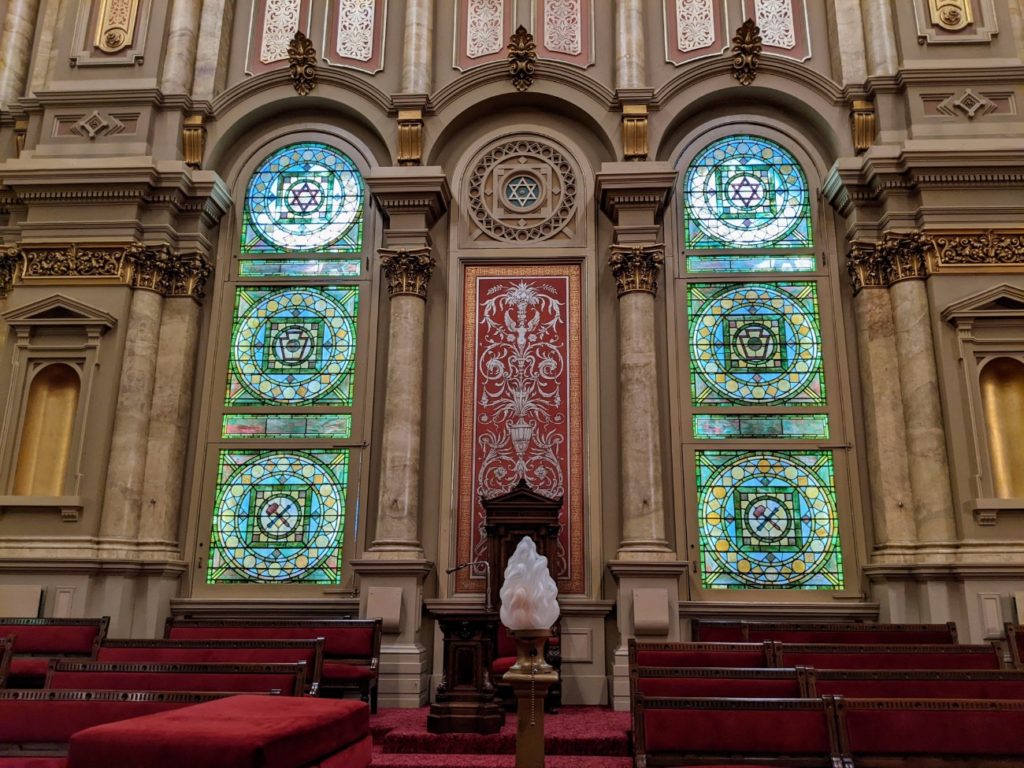
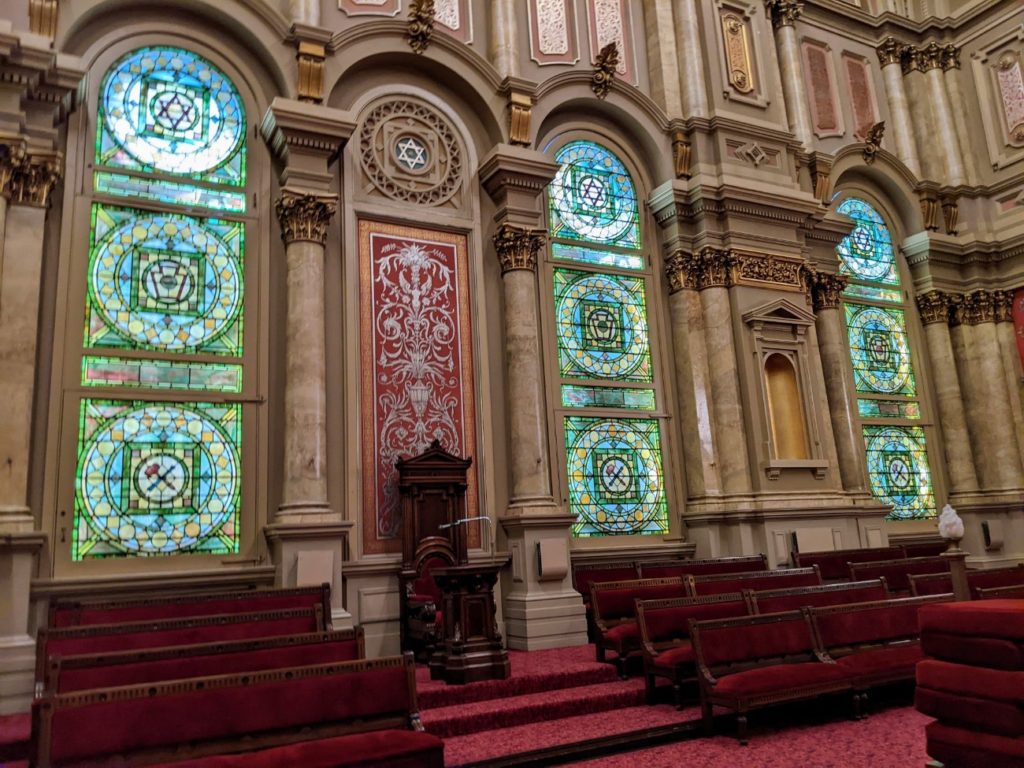
Corinthian Hall
Another meeting room named for it’s architectural columns, the Corinthian Hall looks like a cross between a Greek temple and a Baptist church. Mainly due to the female-figured columns at the end – it looks like a baptistry to me!
Soft blues and greens dominate the soaring ceiling, the tallest in the building. I don’t think I can imagin getting married in the Egyptian Room, but I can easily imagine a wedding in this one.
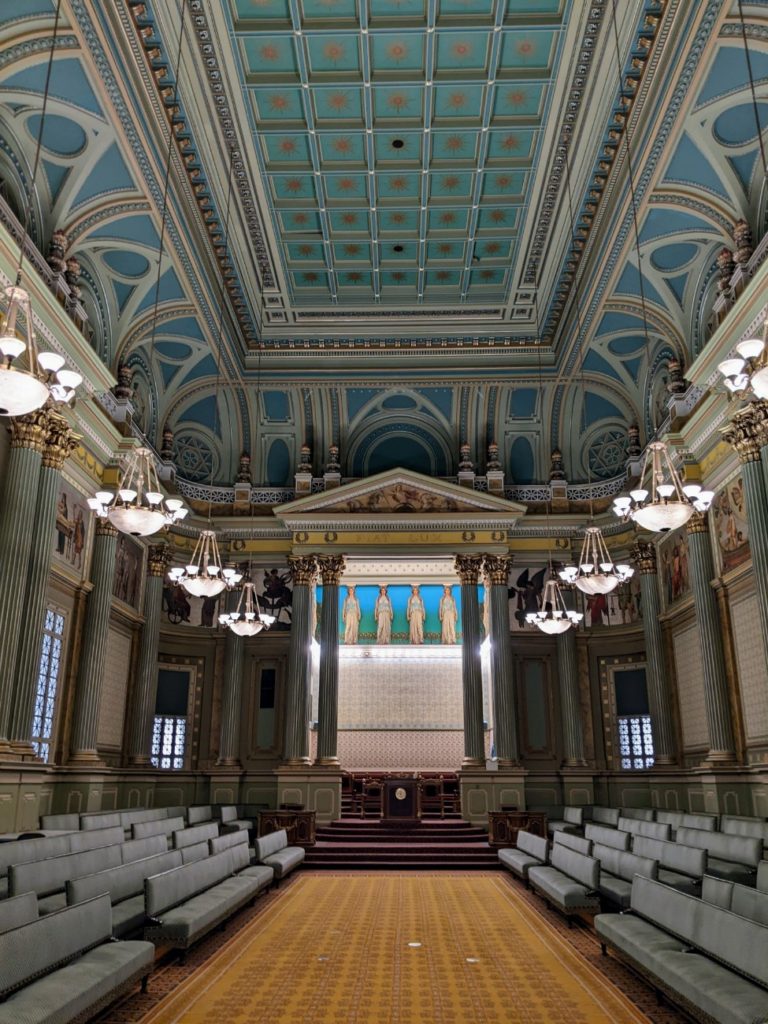
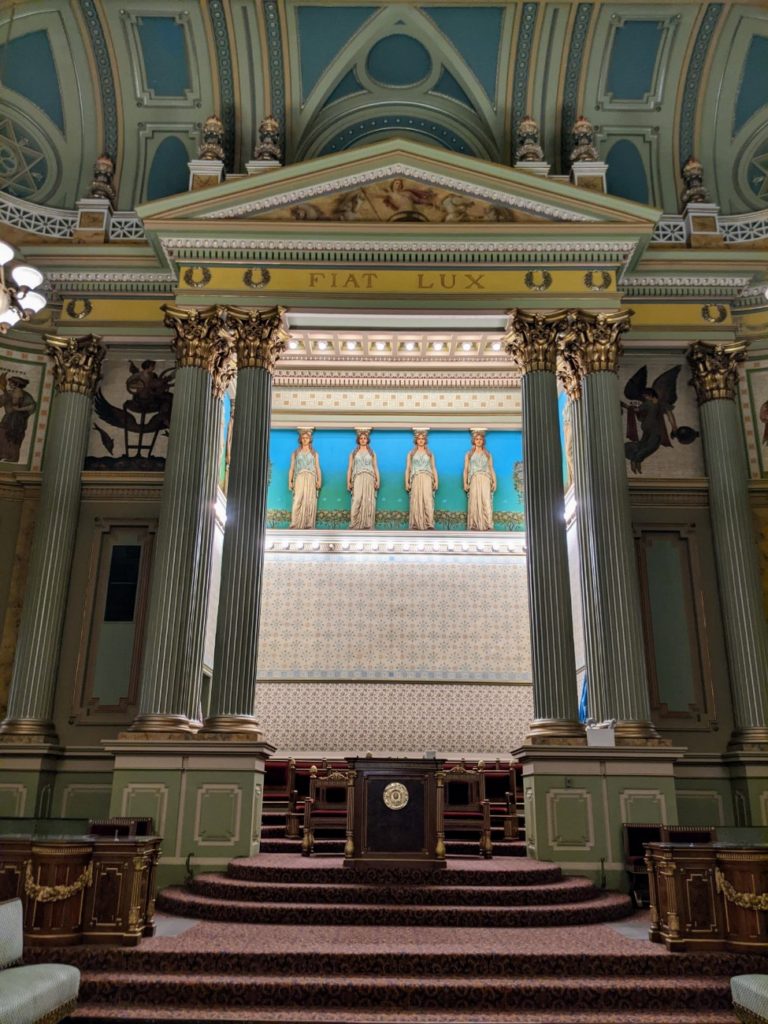
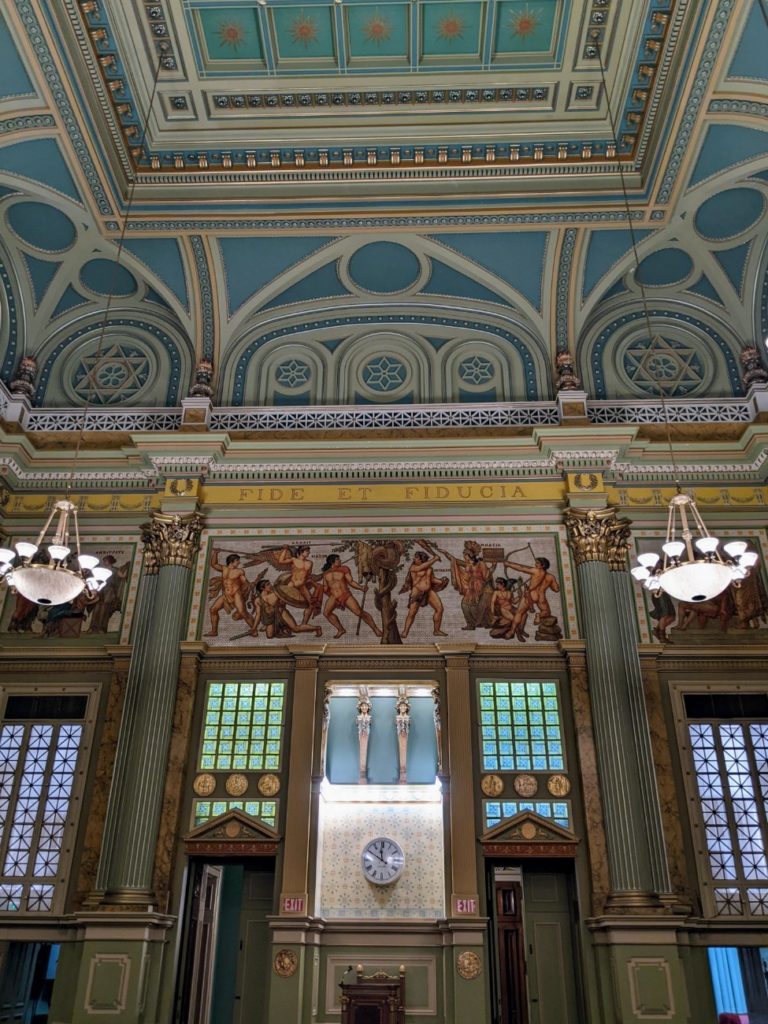
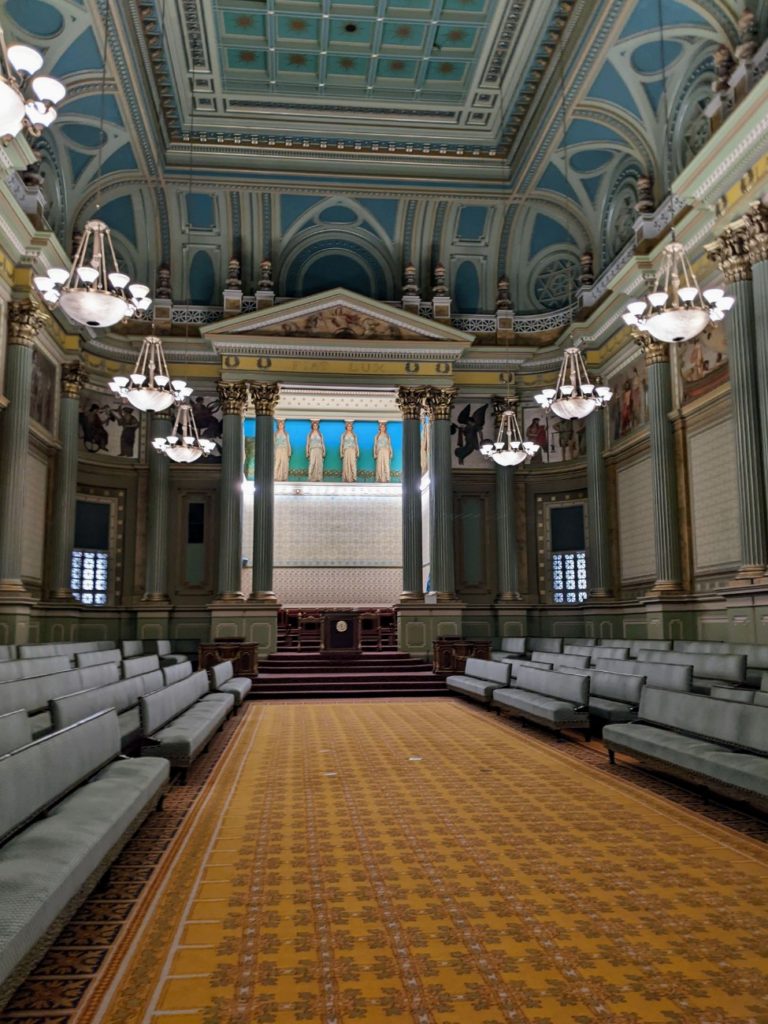
Visting the Philadelphia Masonic Temple
If you’re in Philadelphia and want to visit for yourself, you can tour the Philadelphia Masonic Temple Tuesday-Saturday. Tours are given at 10 am, 11 am, 1 pm, 2 pm, and 3 pm. (Basically every hour, on the hour, between 10-4 except at noon.) They’re closed Sundays and Mondays and any major holiday.
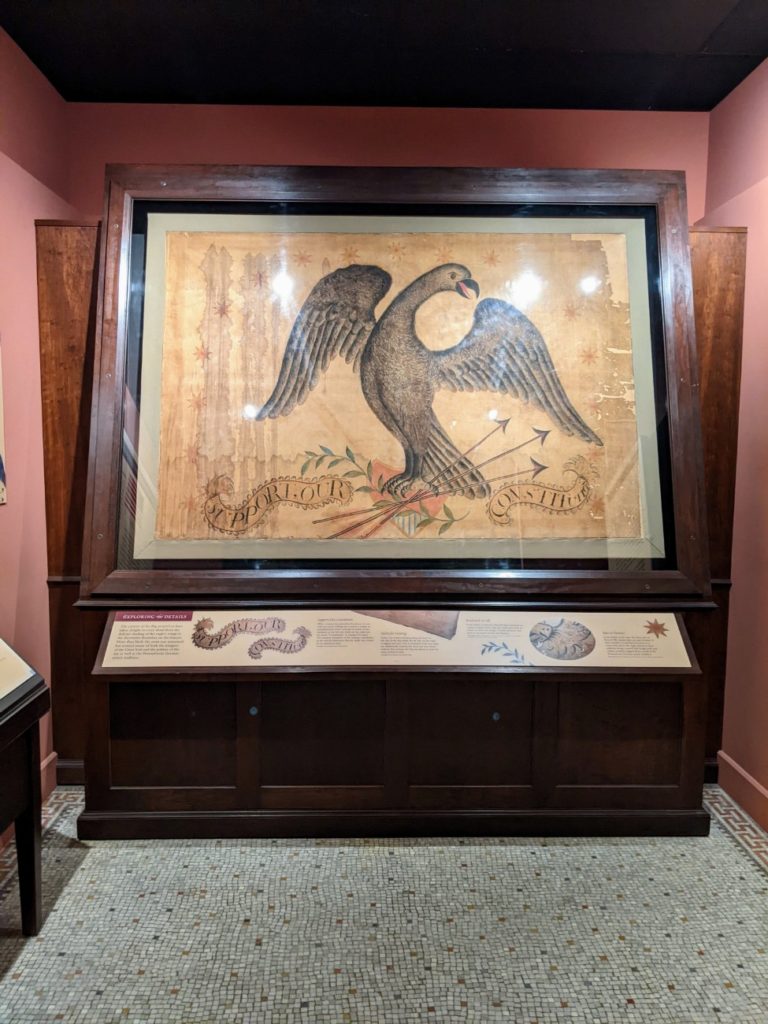
Admission
Visiting Philadelphia’s Masonic Temple costs $15 for adults, $10 for students with ID and seniors 65+, $5 for kids 12 and under, and free for under-5’s. Active and retired military get in free with ID. You can pay a family price of $35 for up to 6 people, or get a discount for groups of 15 or more. If you’re a Pennsylvania Mason with a dues card, you get in for free. Non-PA Masons cost $10 each.
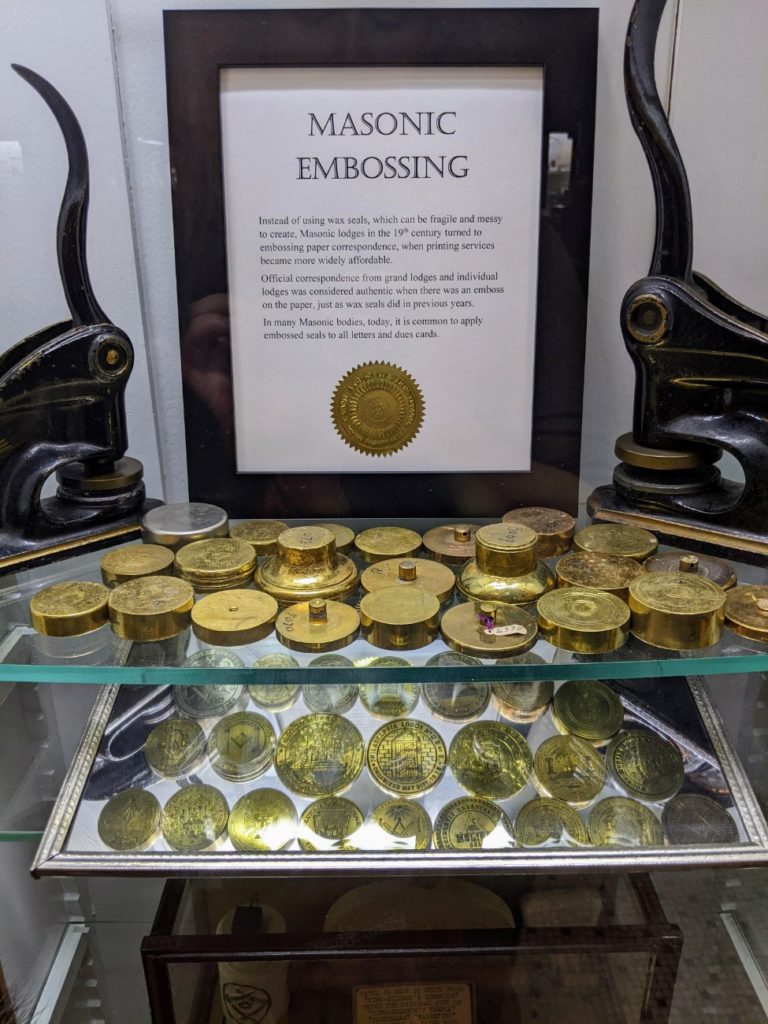
Parking
Parking is regular downtown Philadelphia parking – either on the street or in a garage. The Masonic Temple recommends the nearby Convention Center parking as the most convenient.
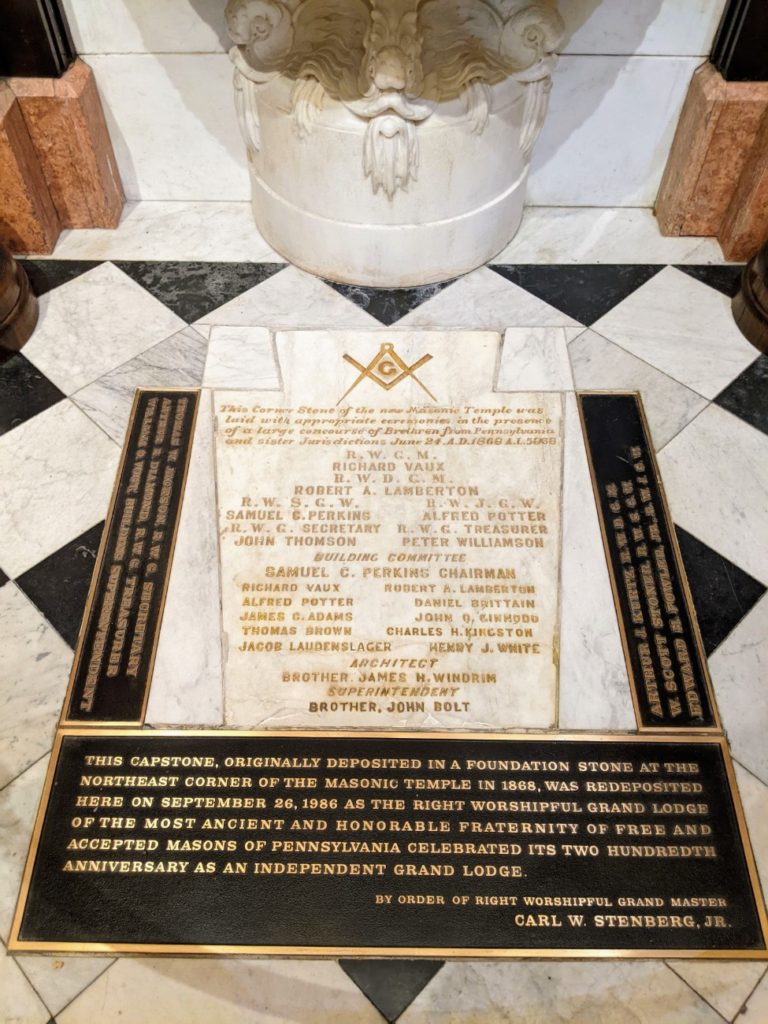
Conclusion
As I’ve driven around the country, I’ve noticed Masonic Temples are always sort of prominent and architecturally interesting. But by far, this is the most decorative I’ve ever seen, and the only one I’ve seen inside of. It’s well worth a look if you’re into architecture, though the secret-society stuff can feel a little skeevy. But it’s not everyday you get to see interiors on the level of a European palace or cathedral, or both in one!
Be First to Comment